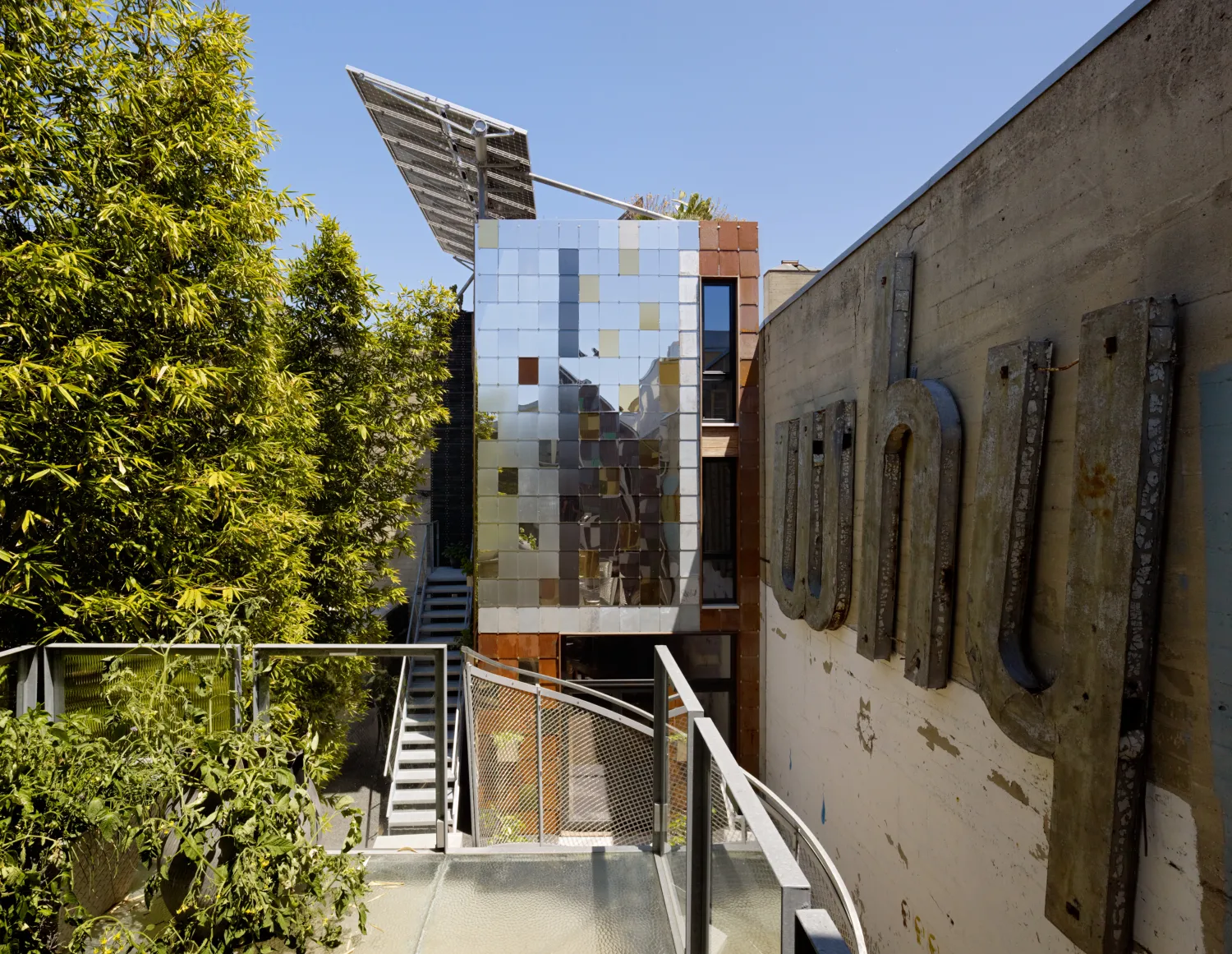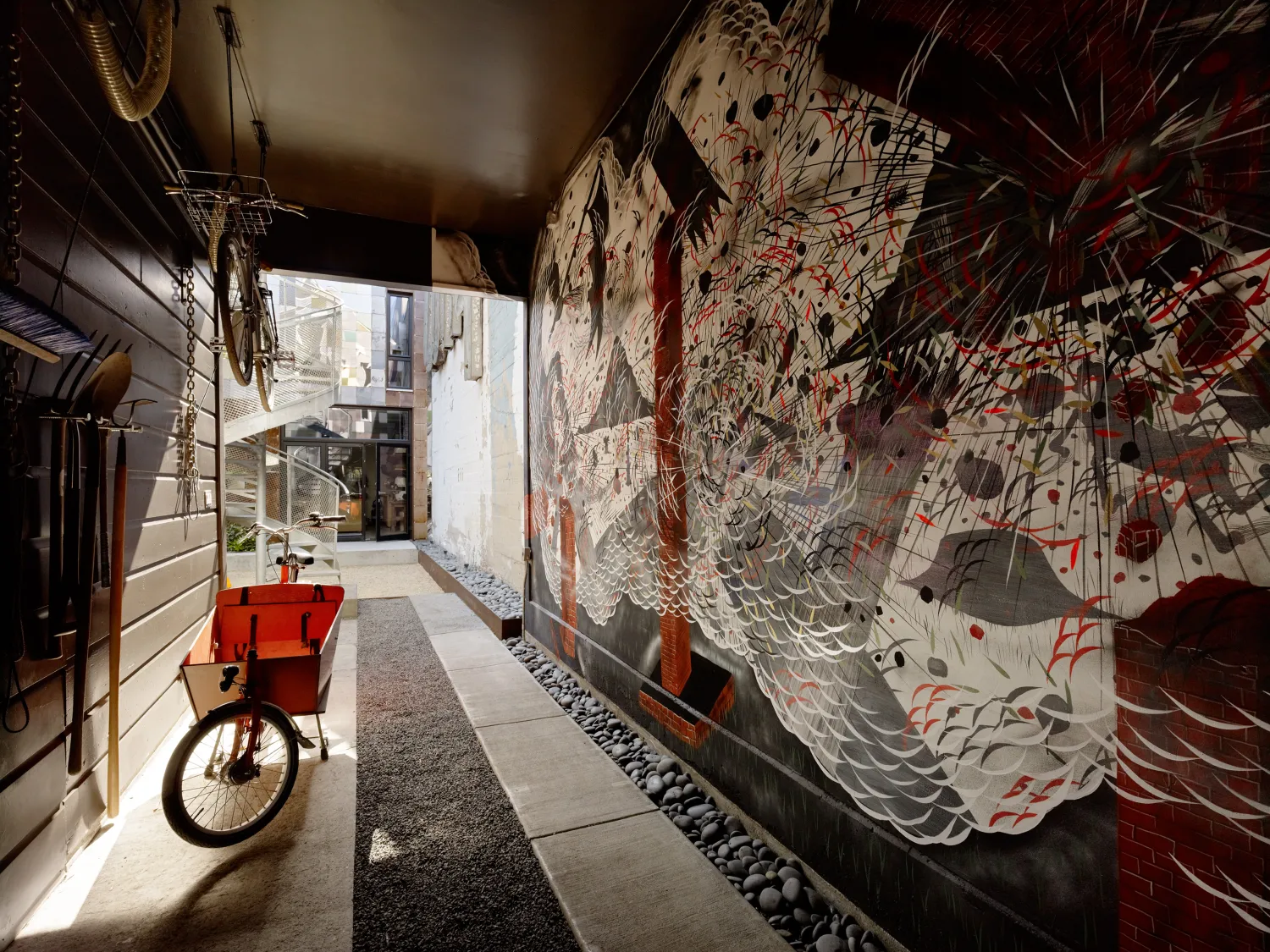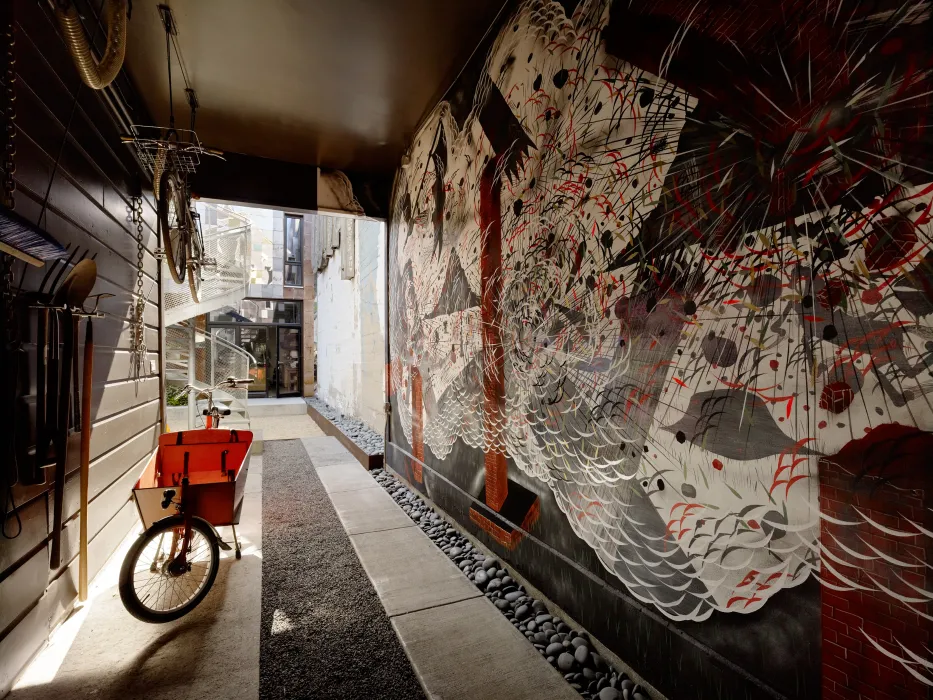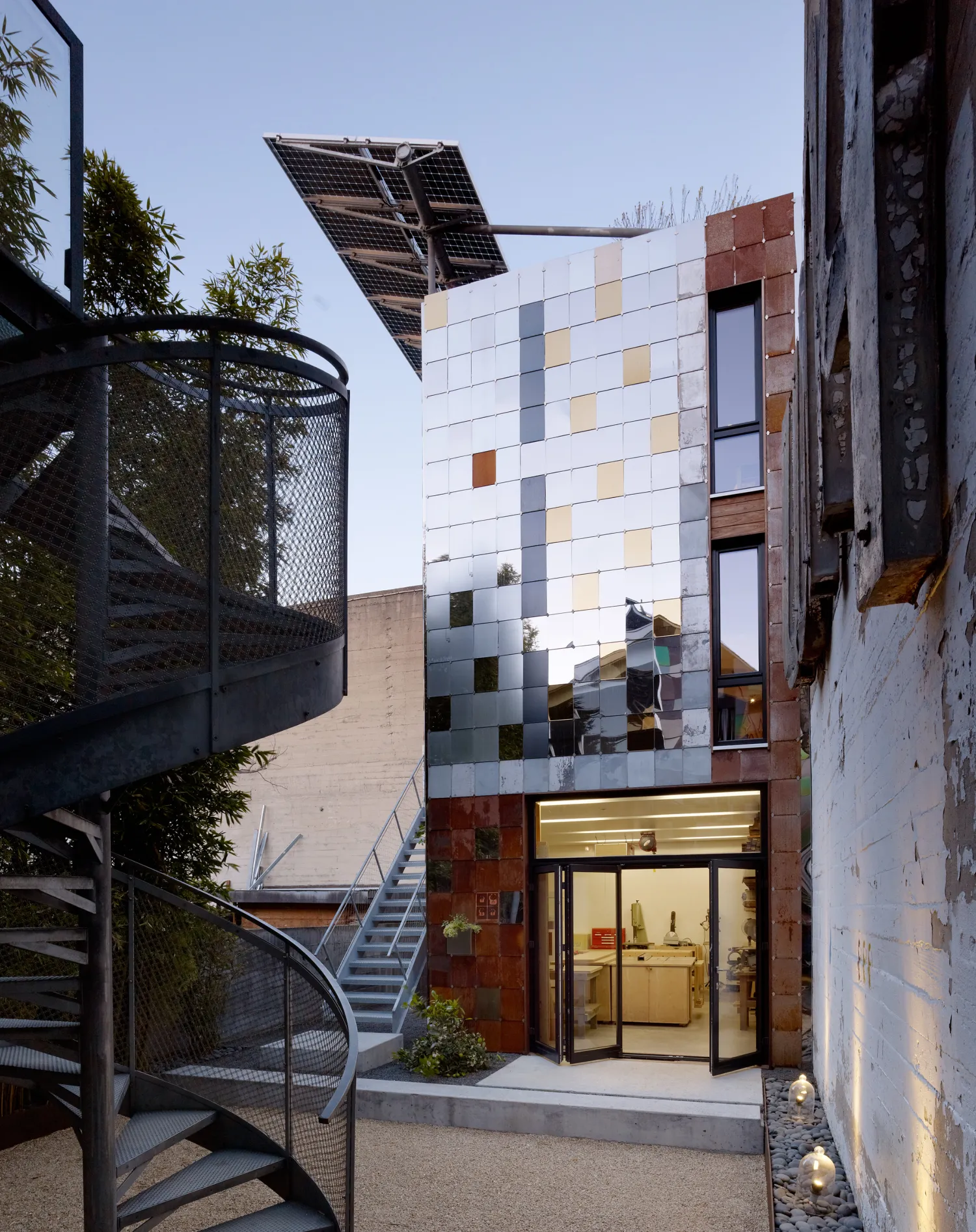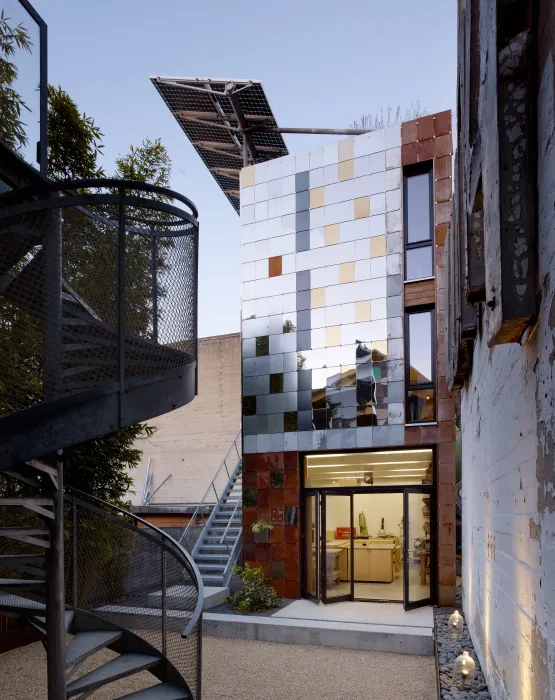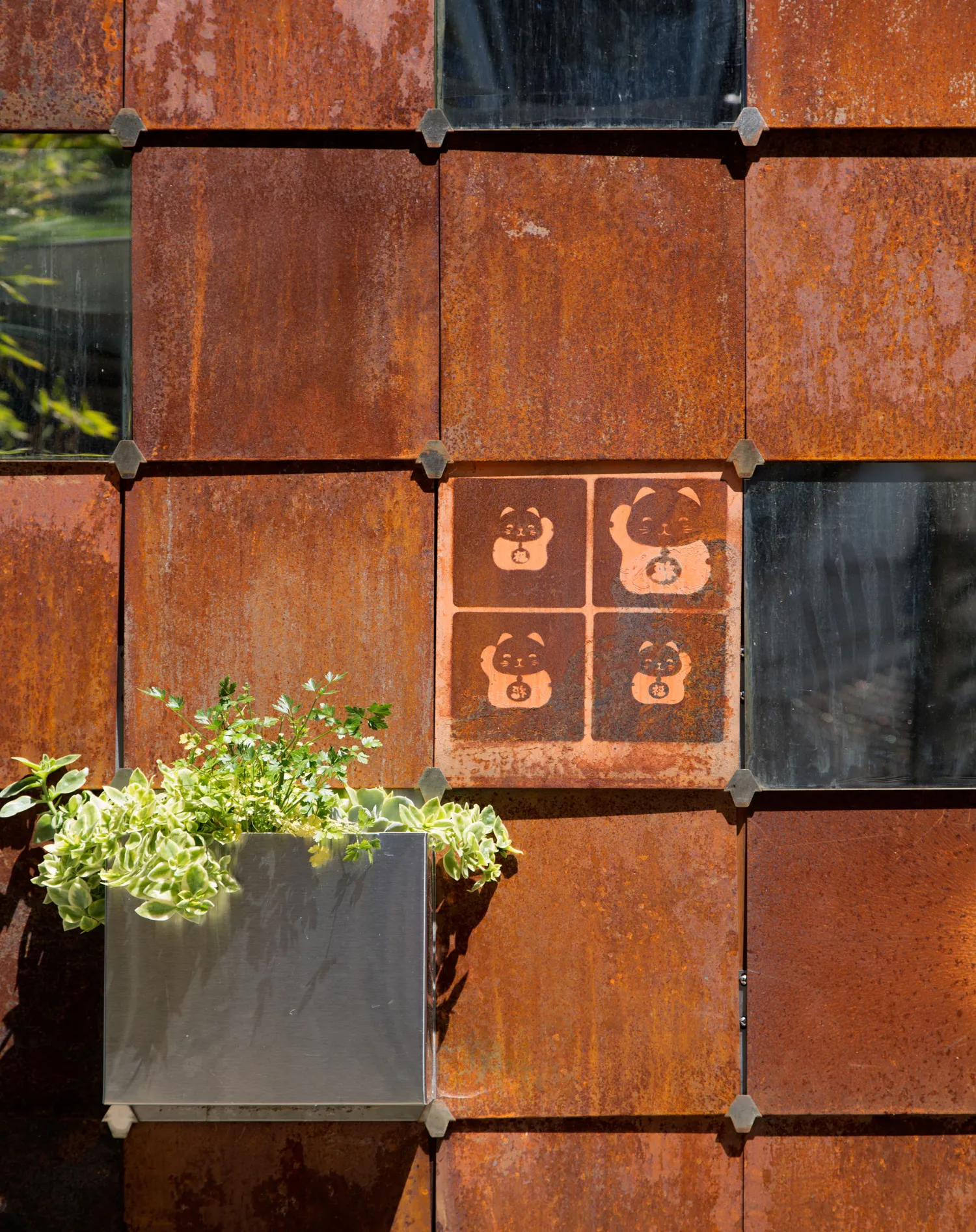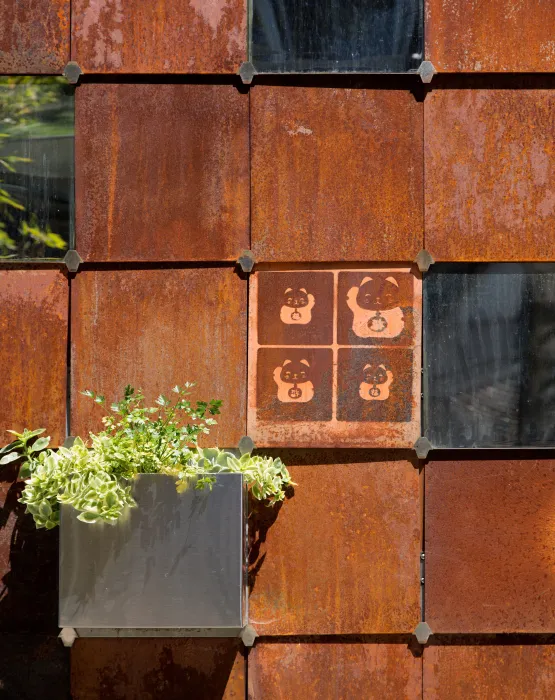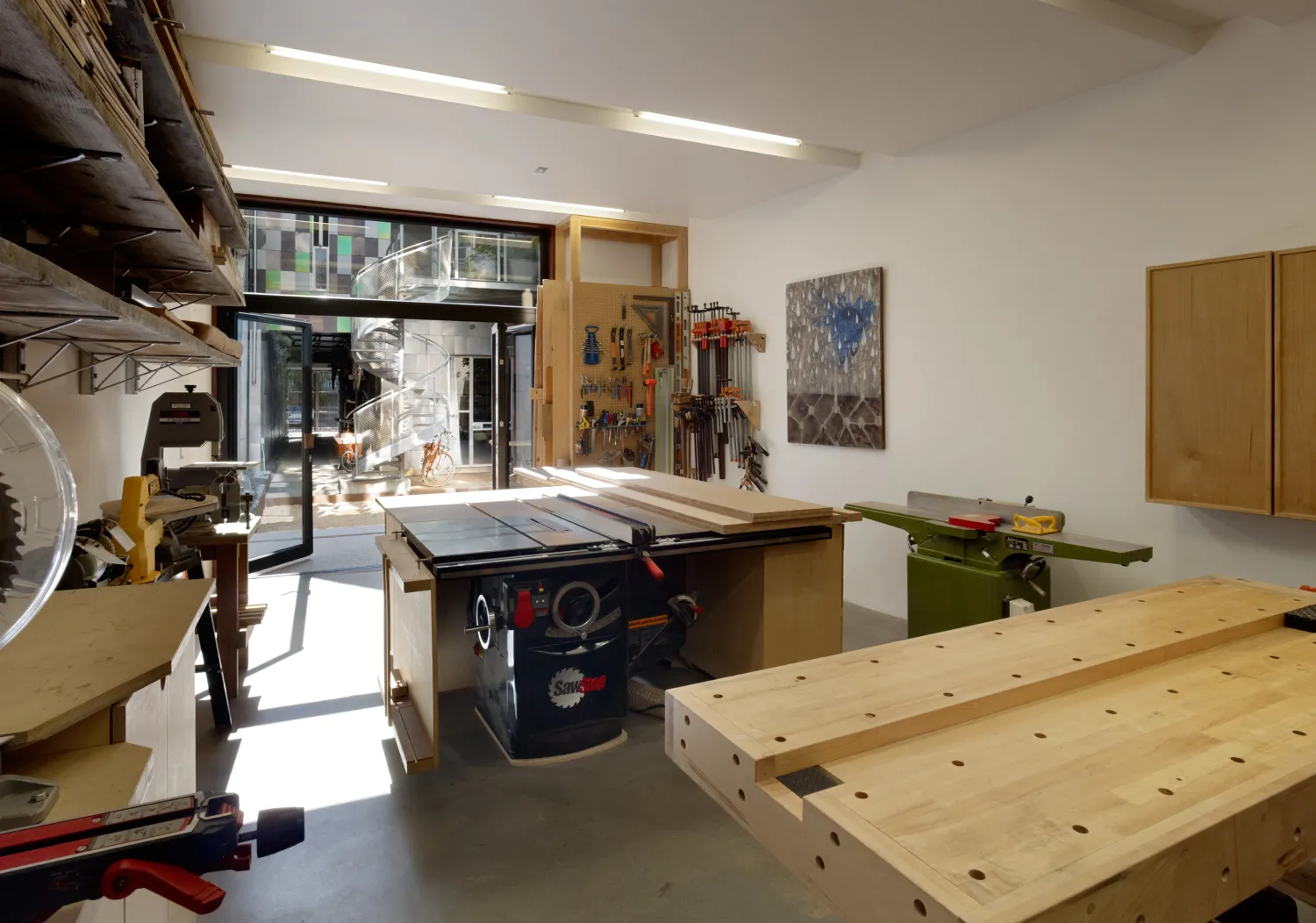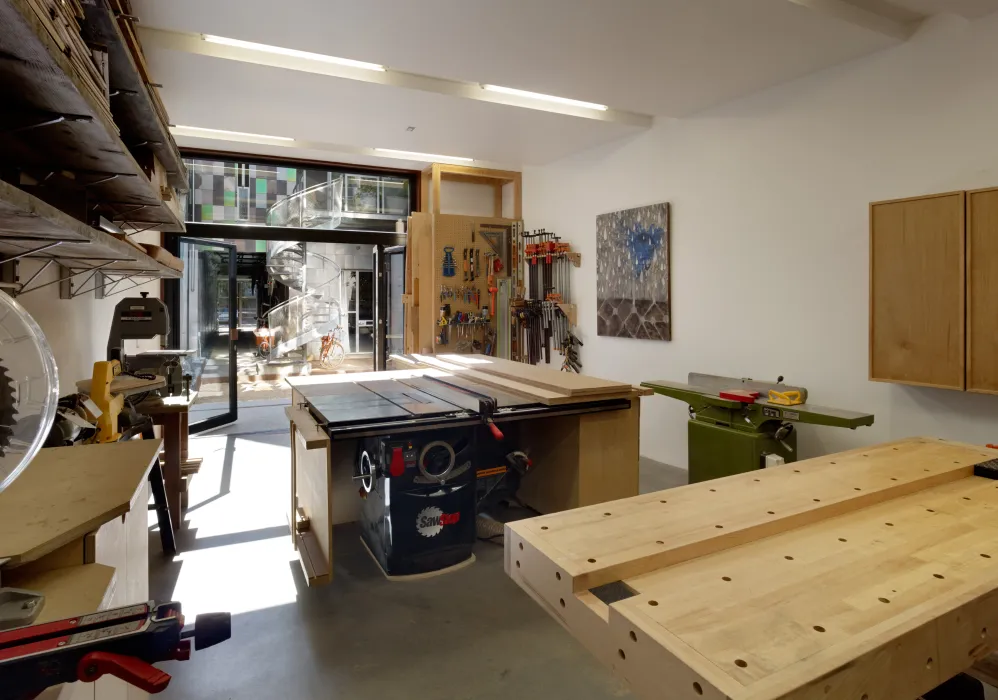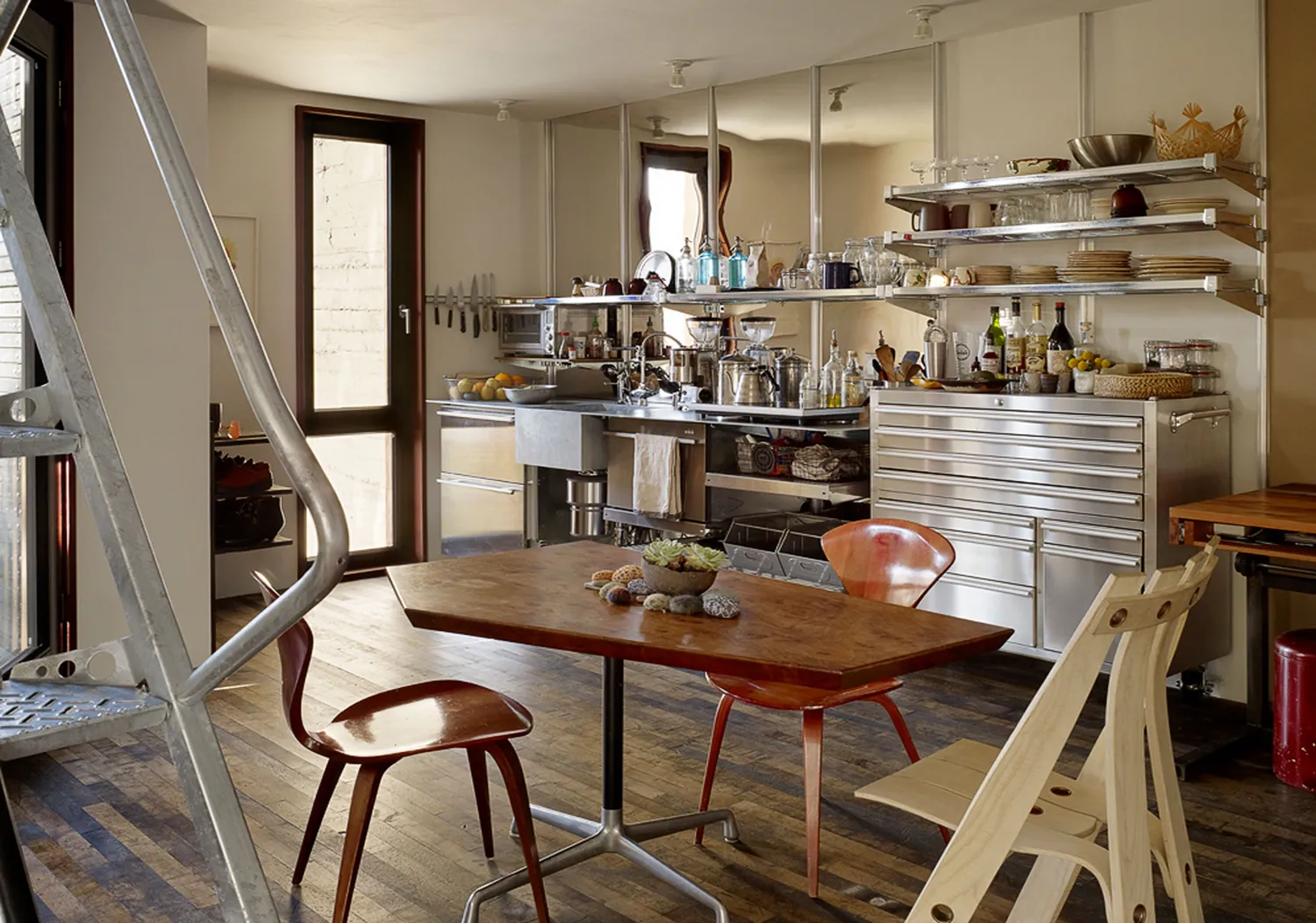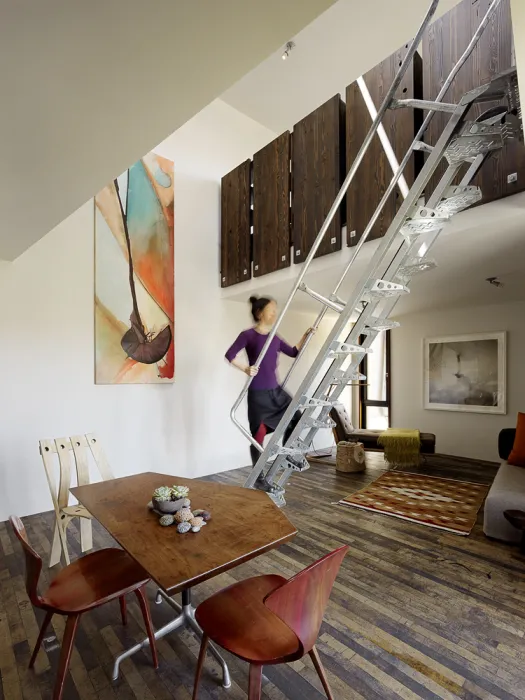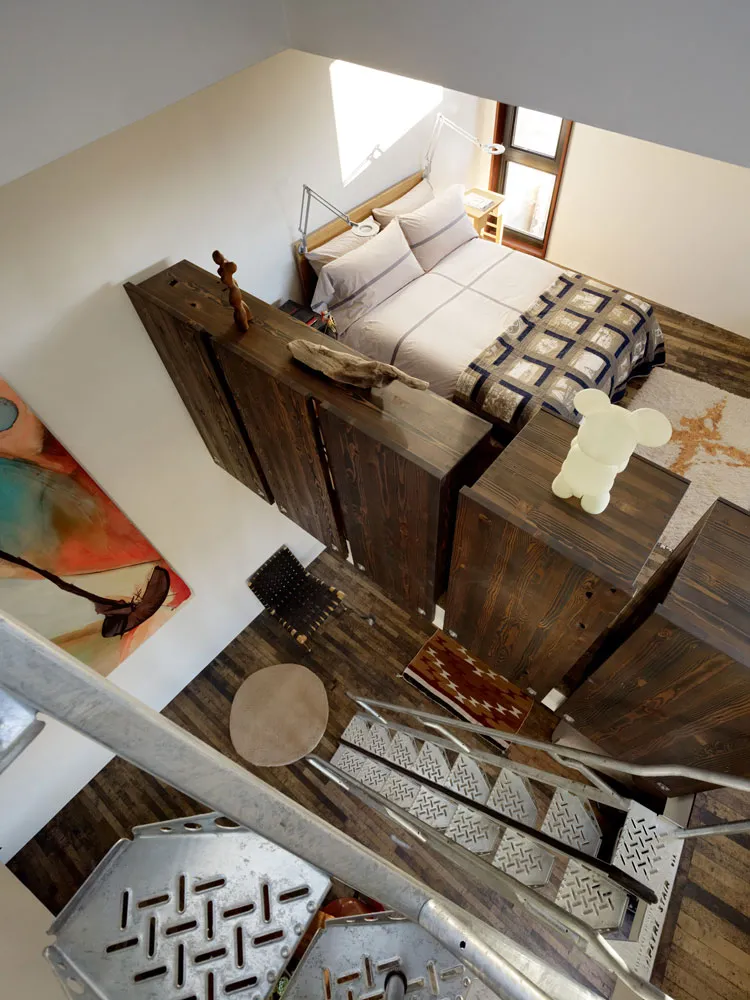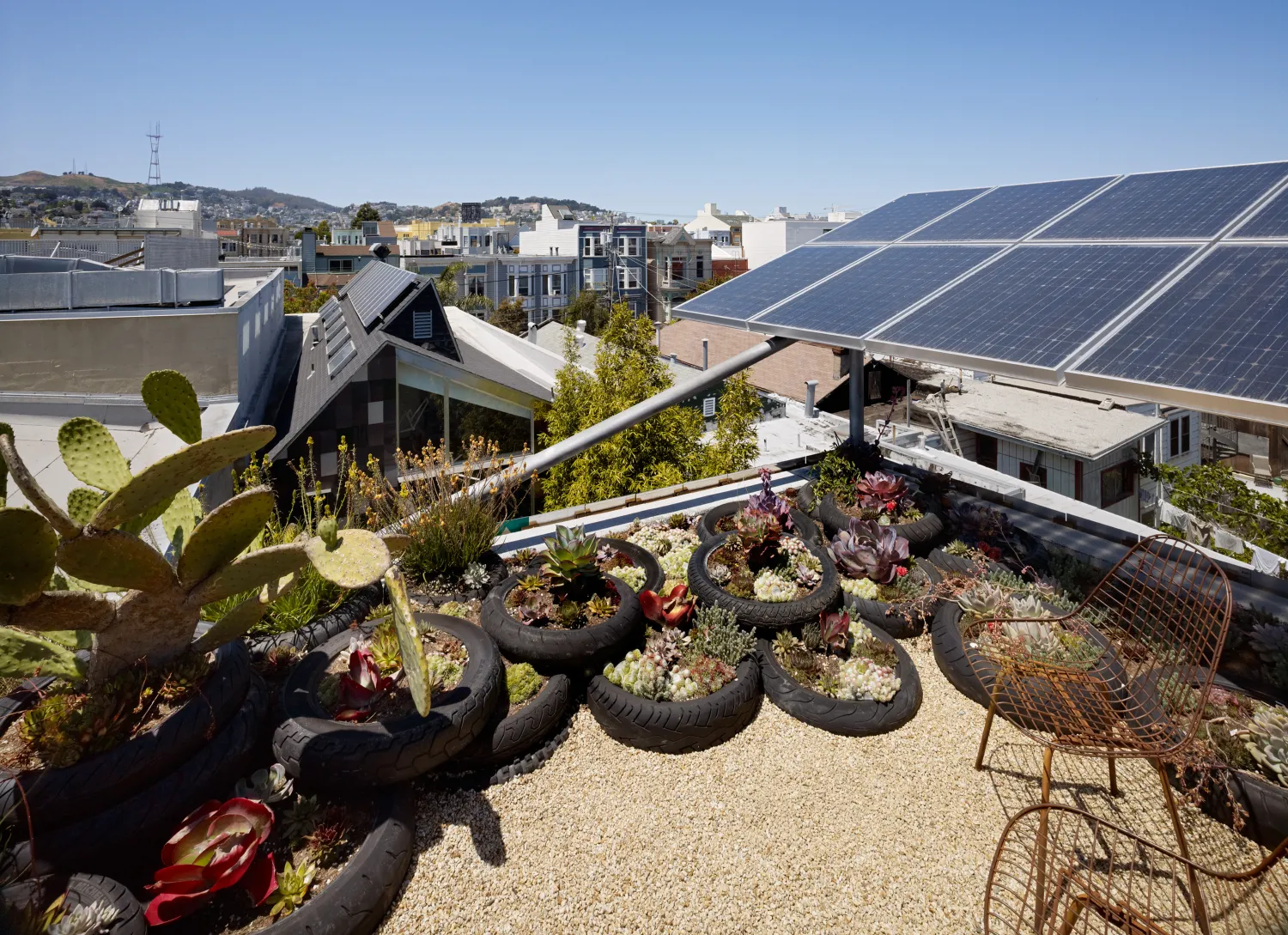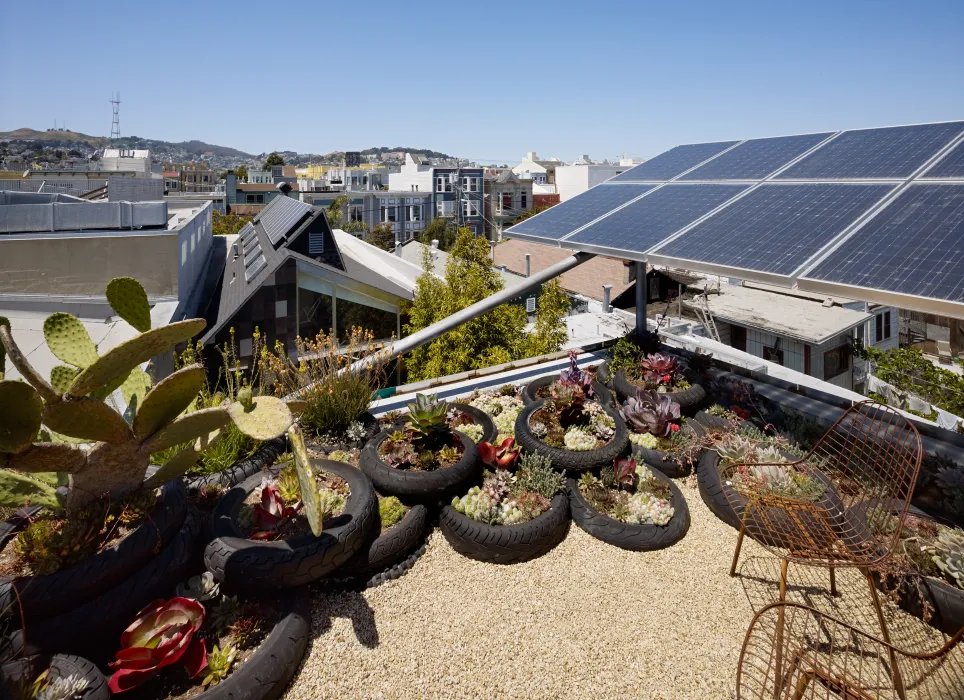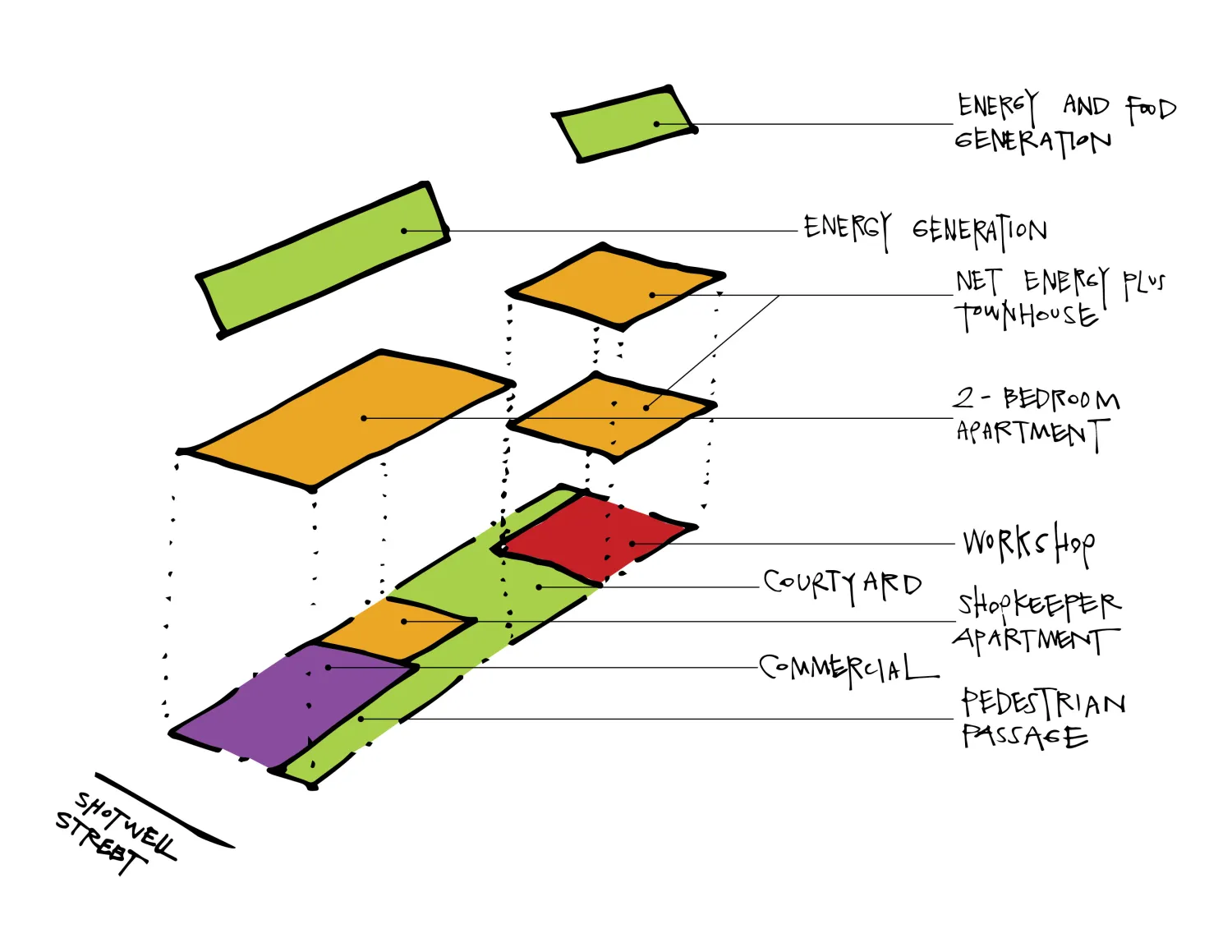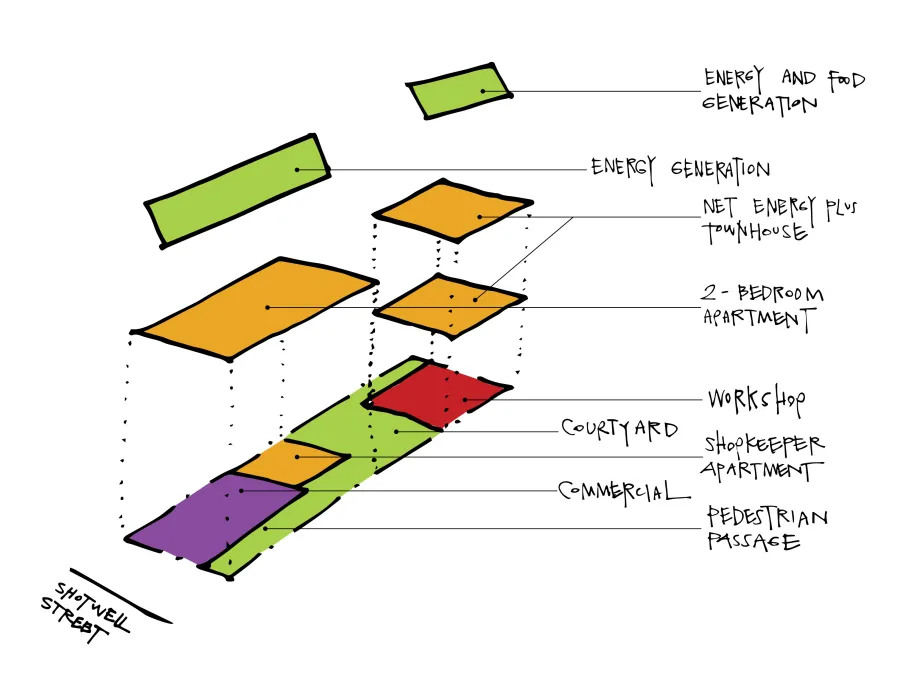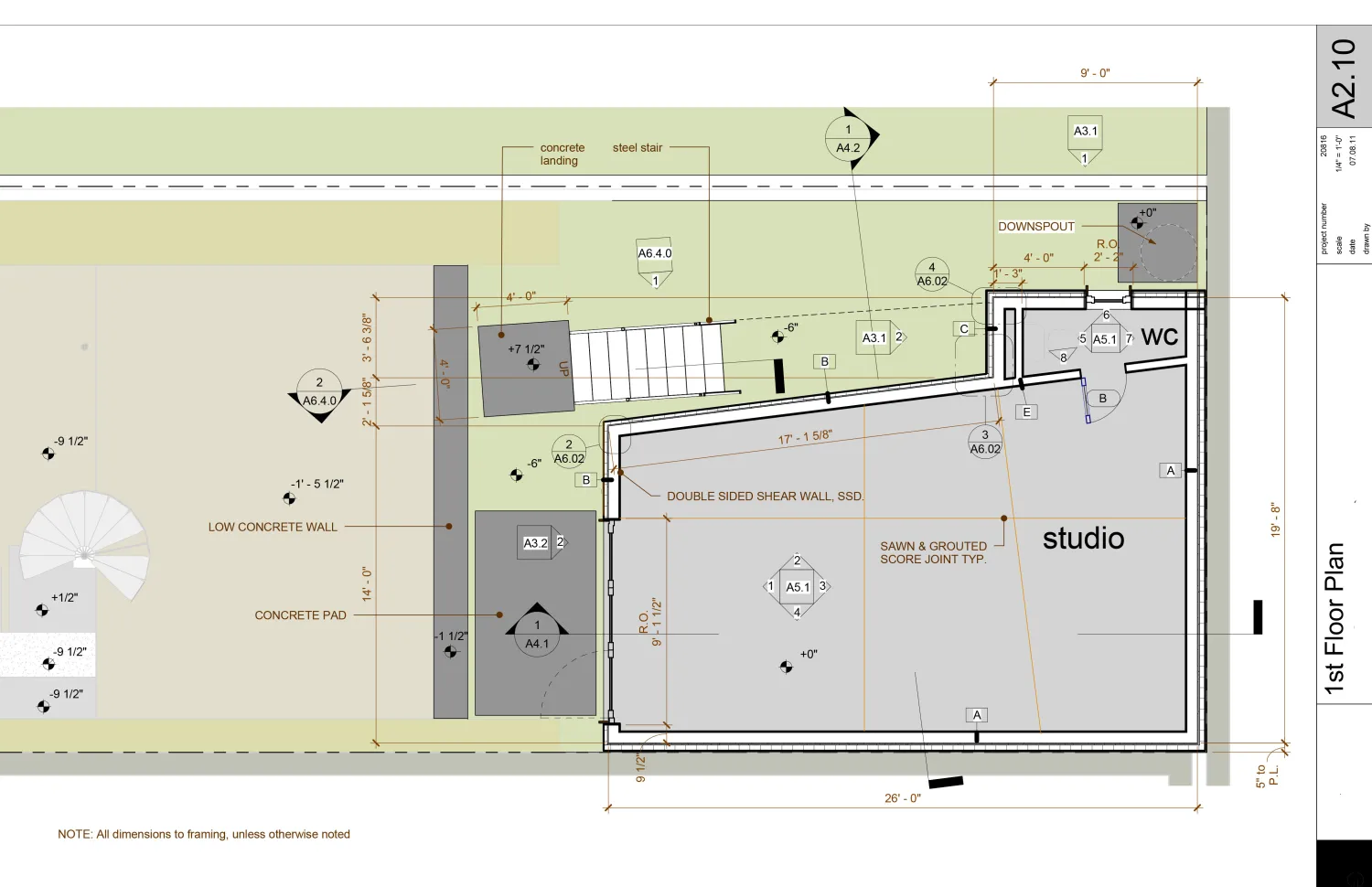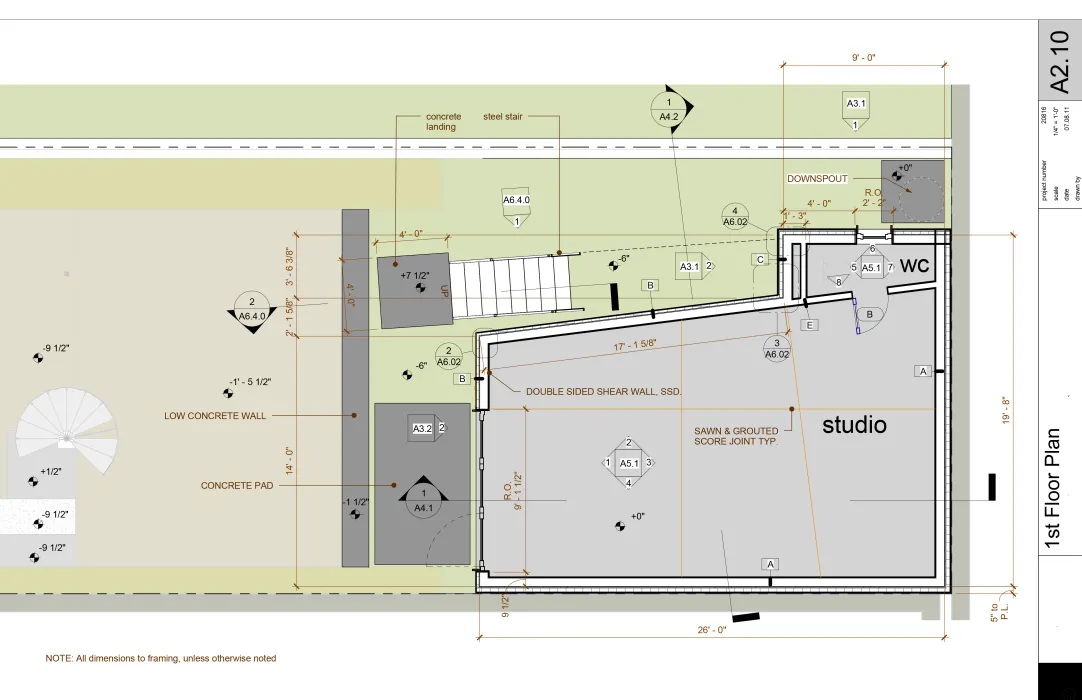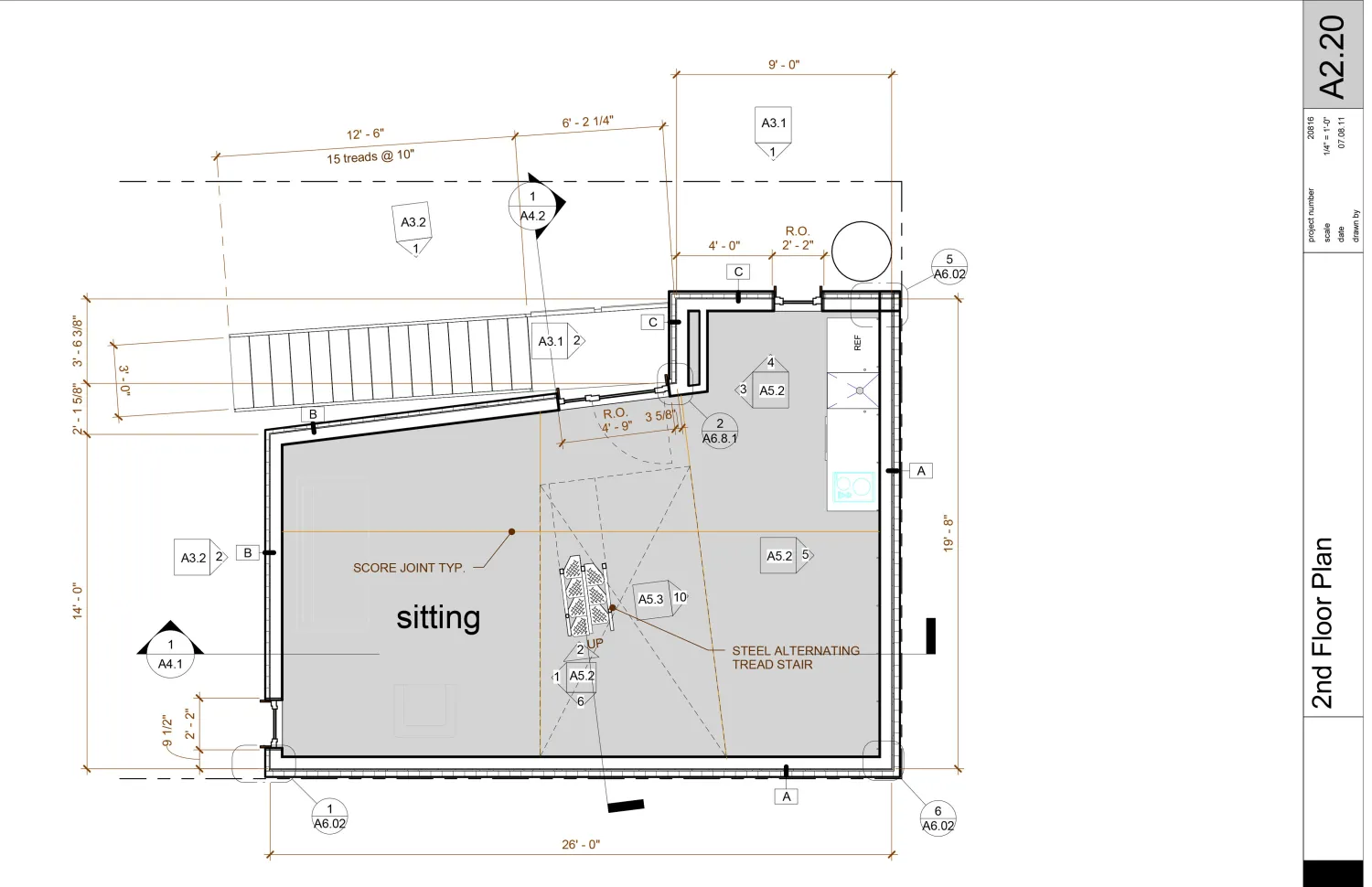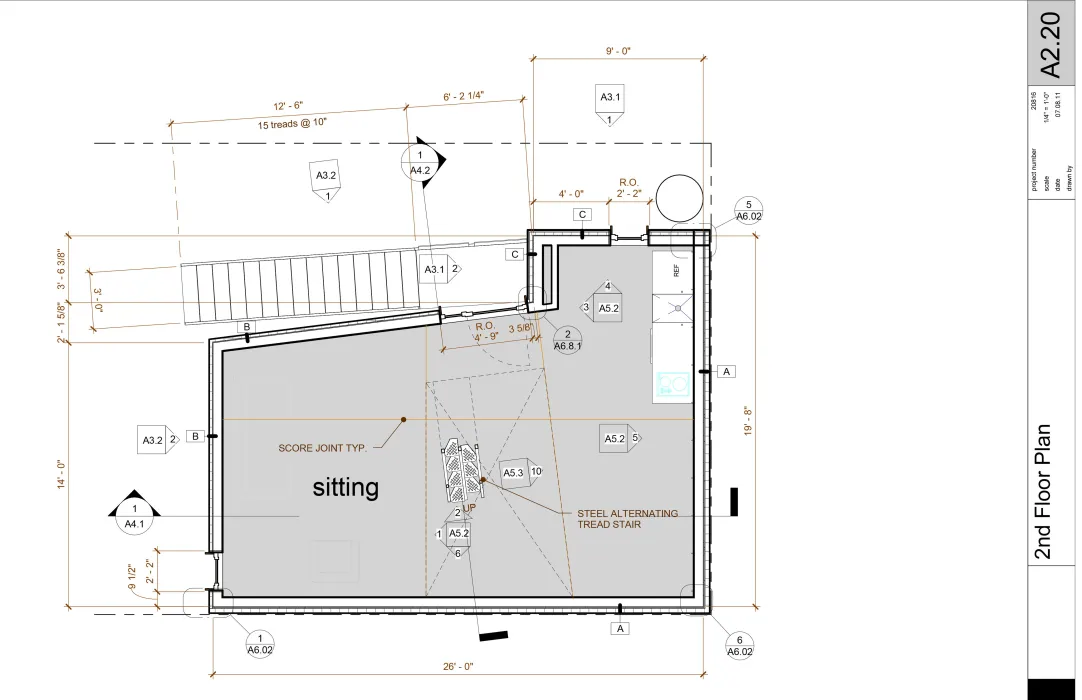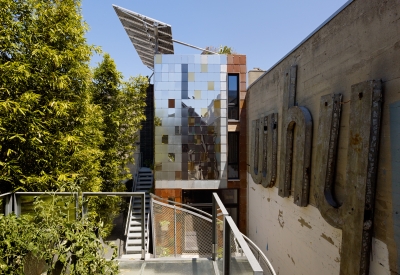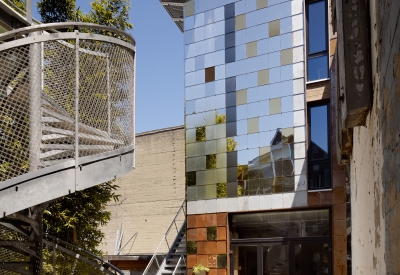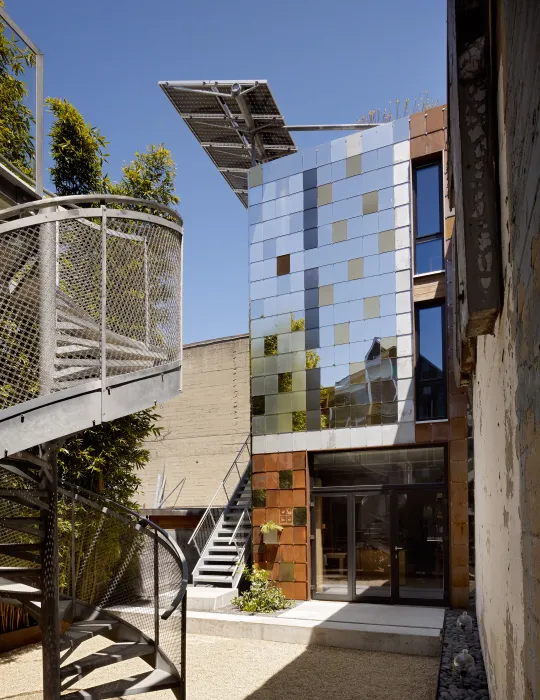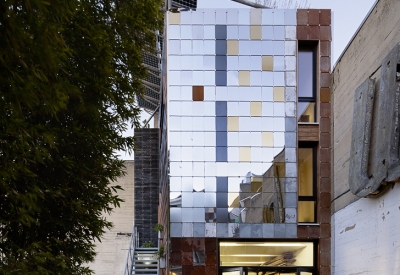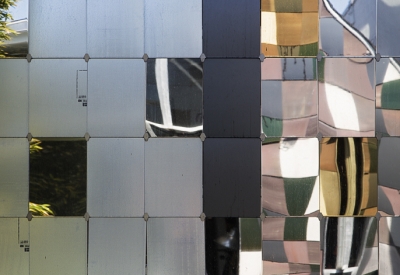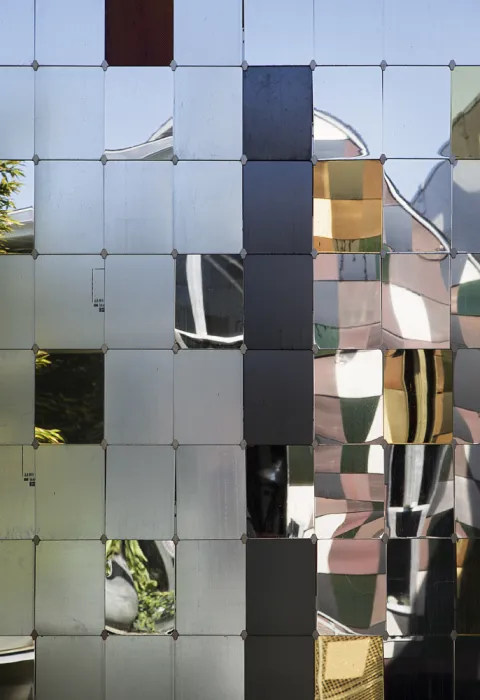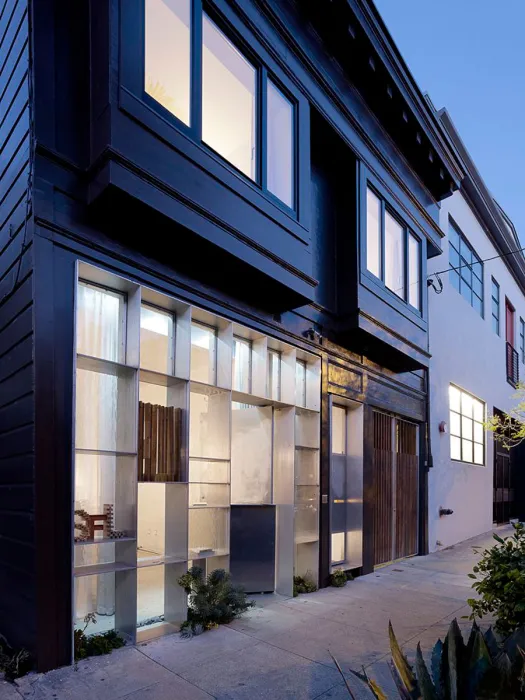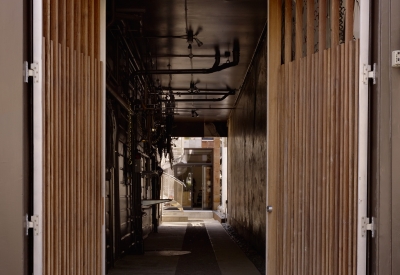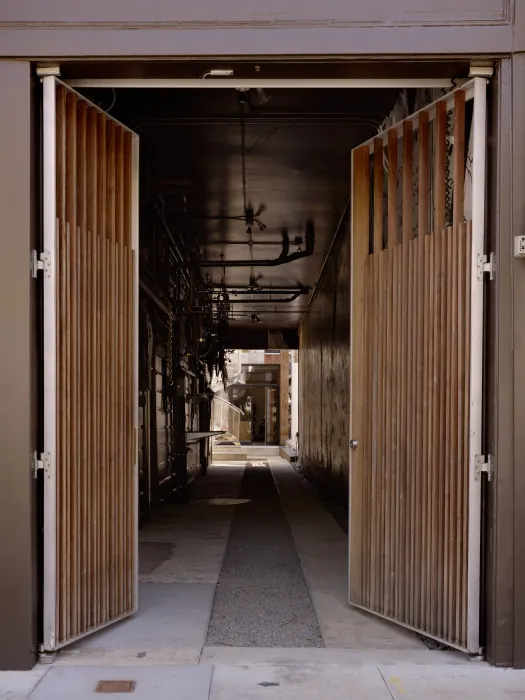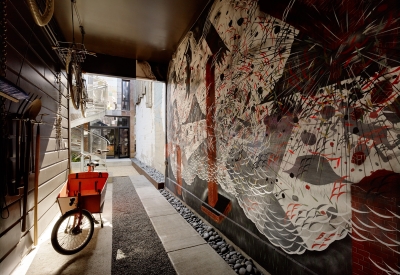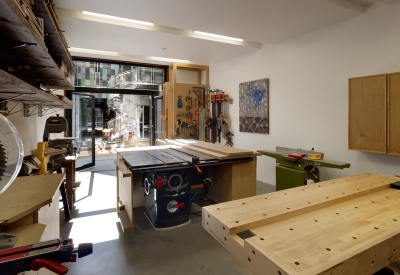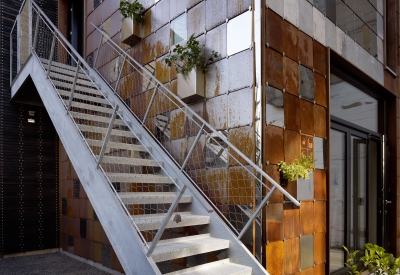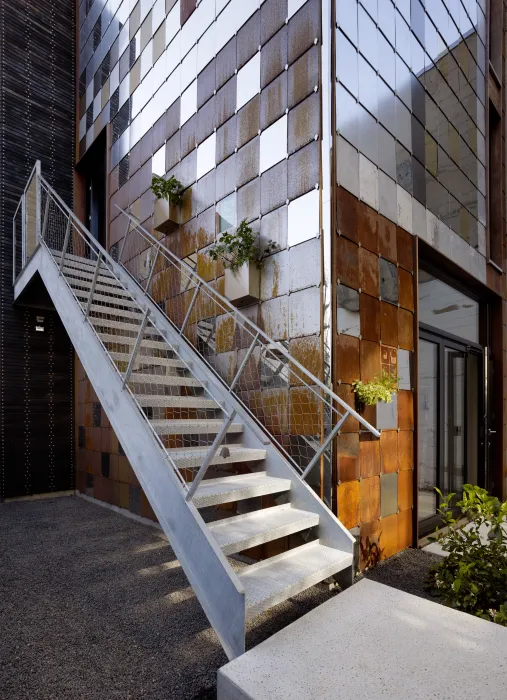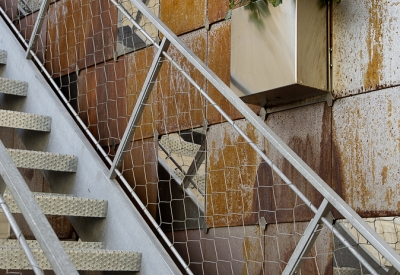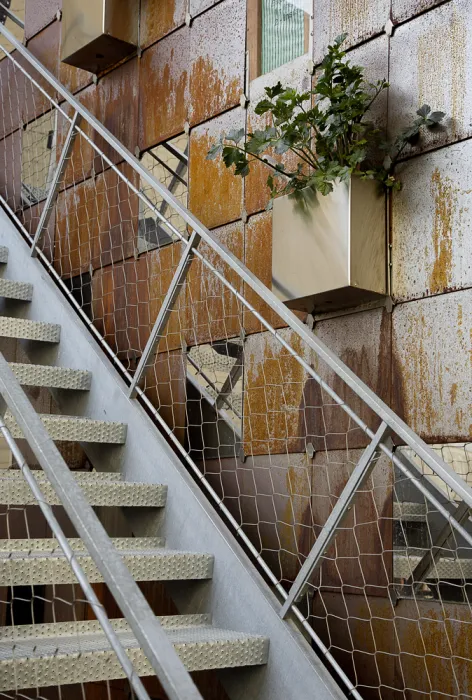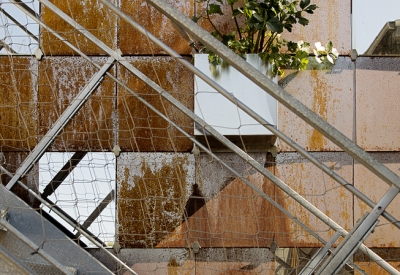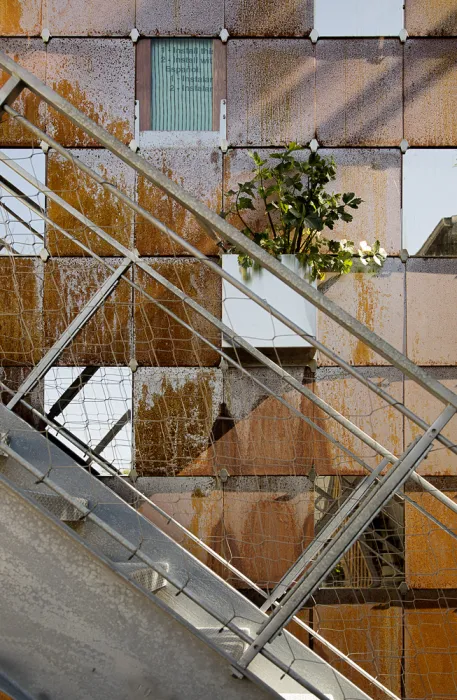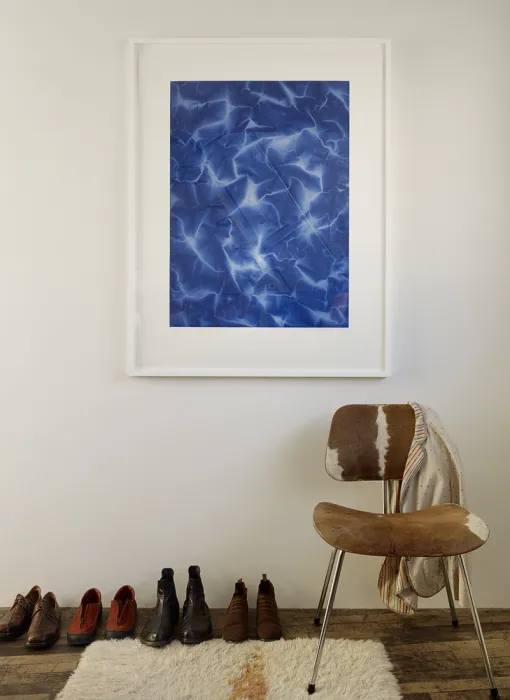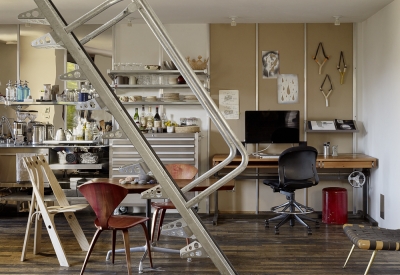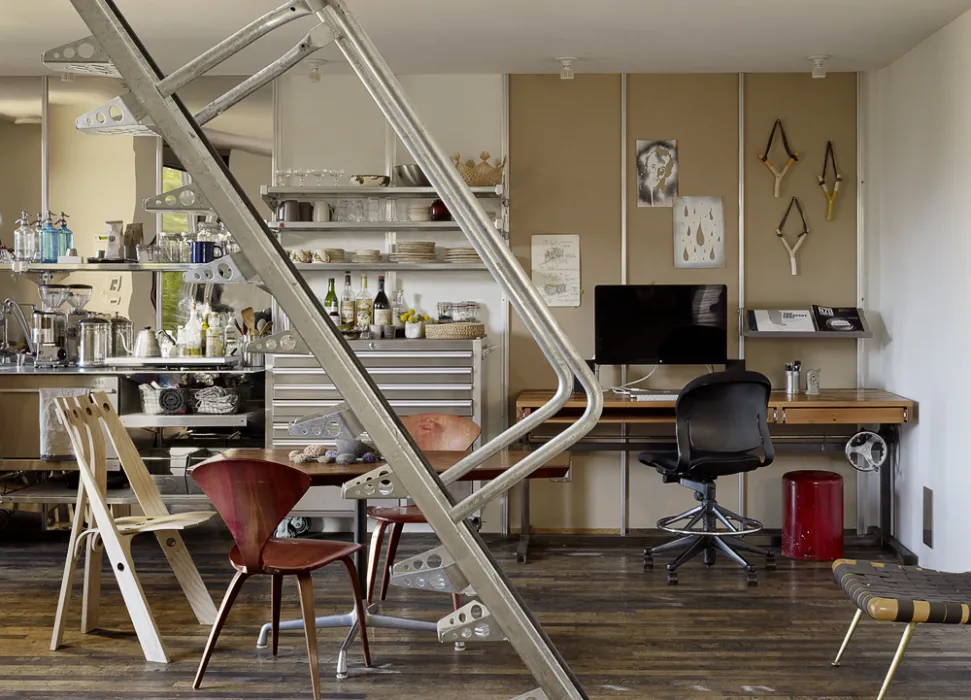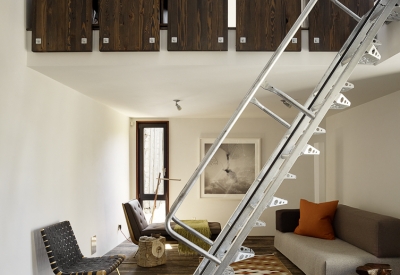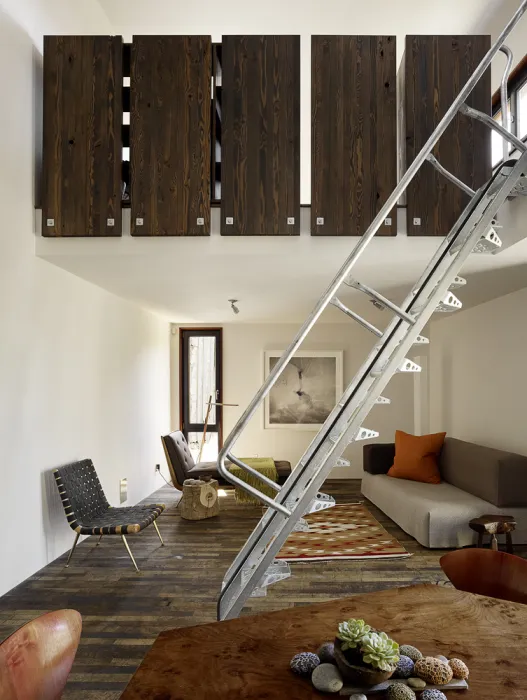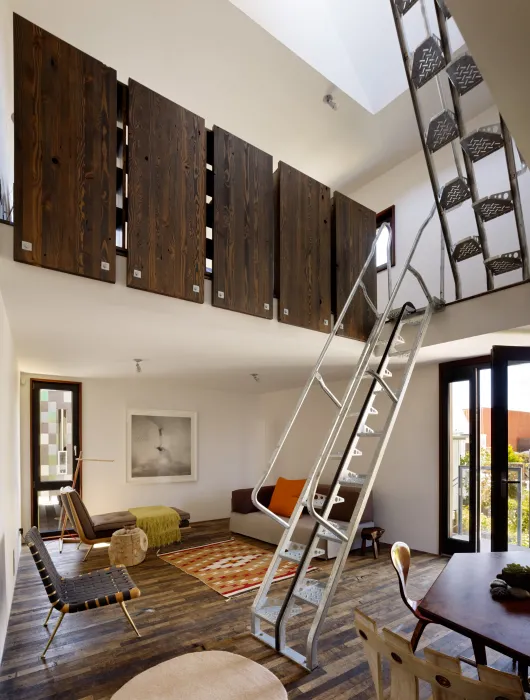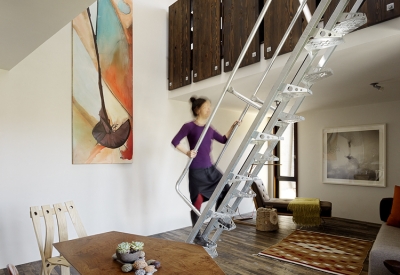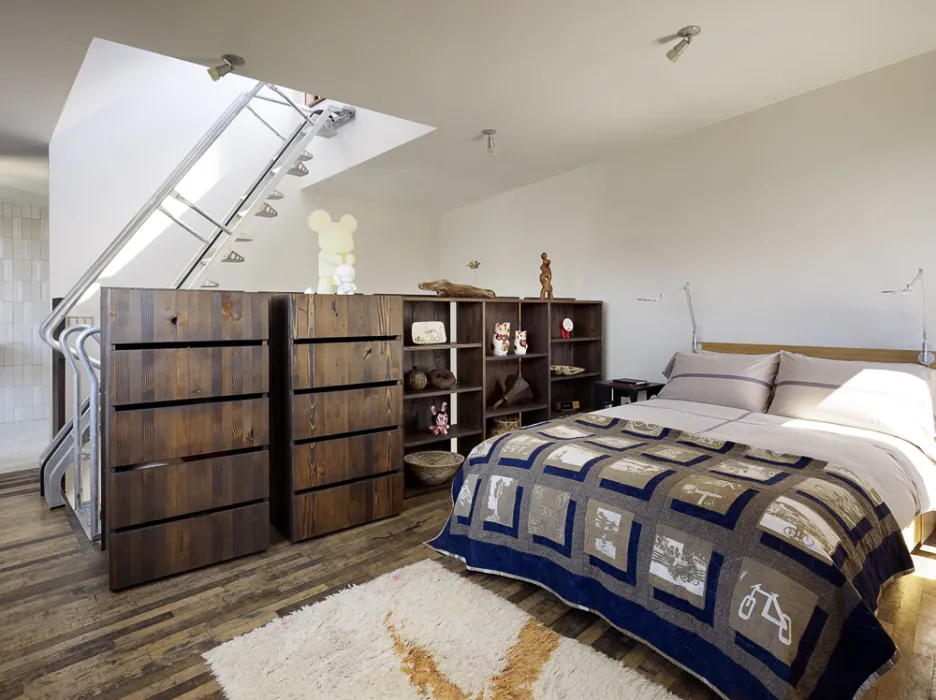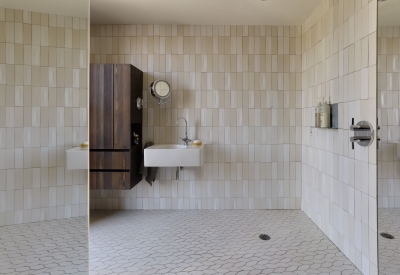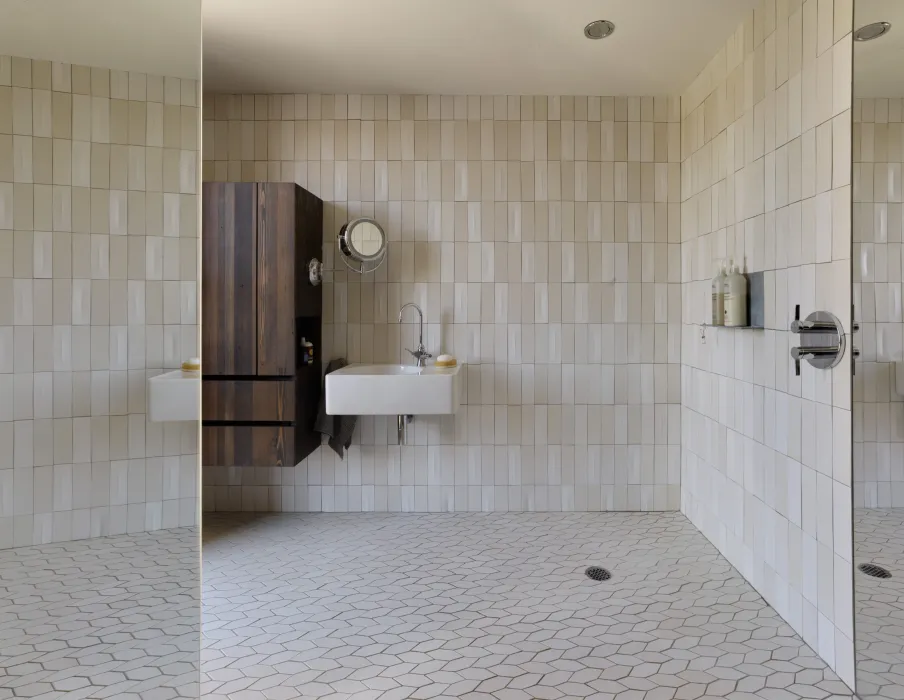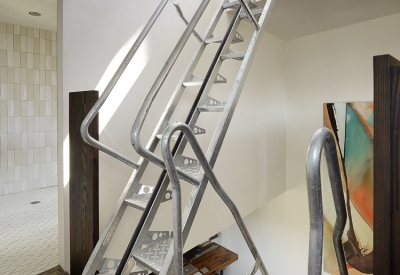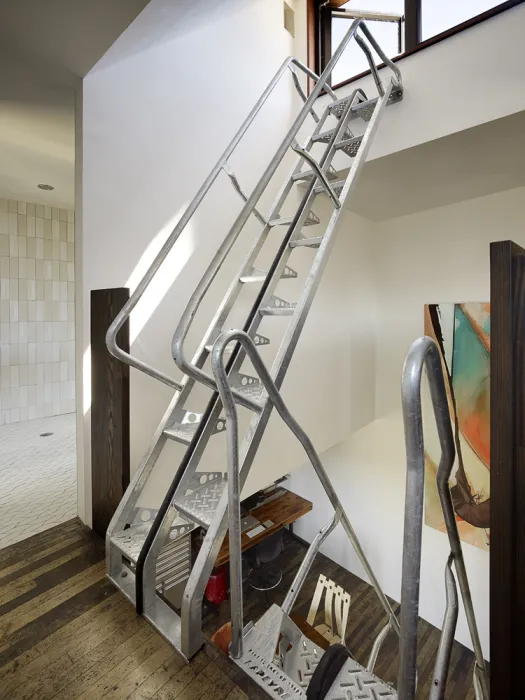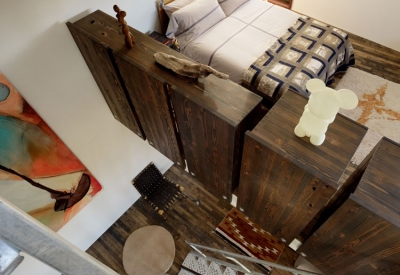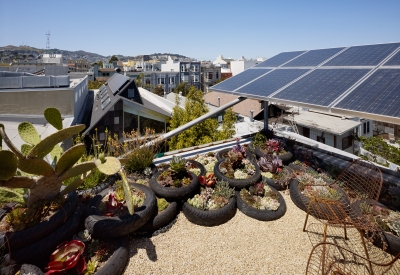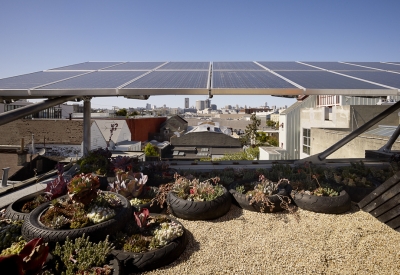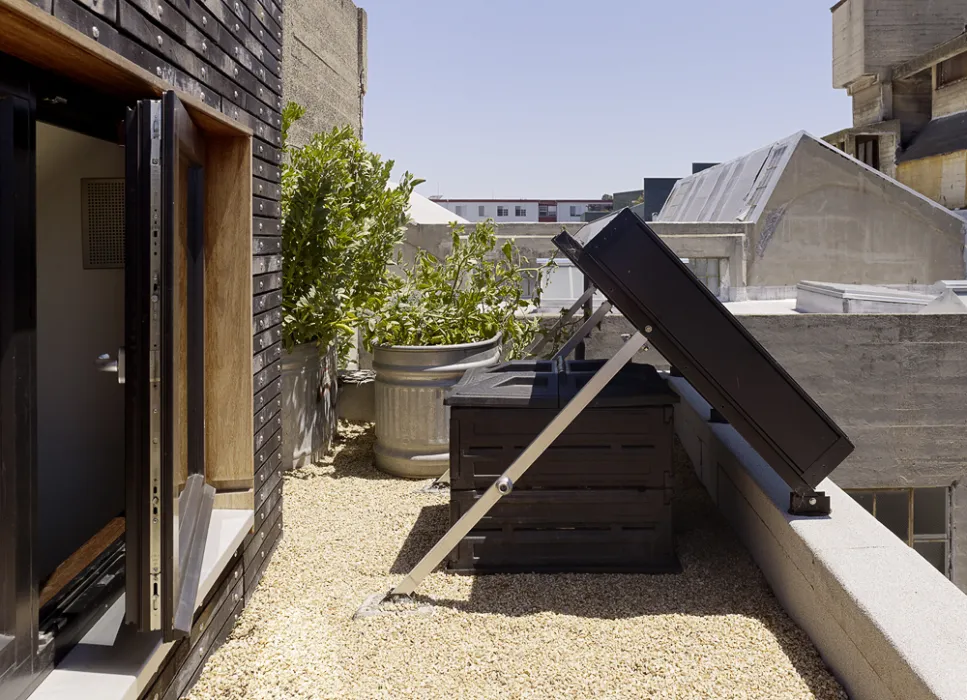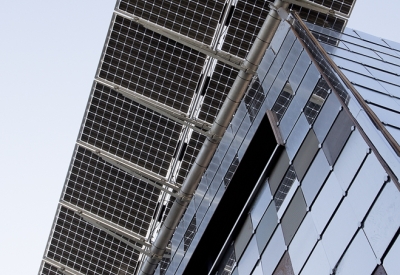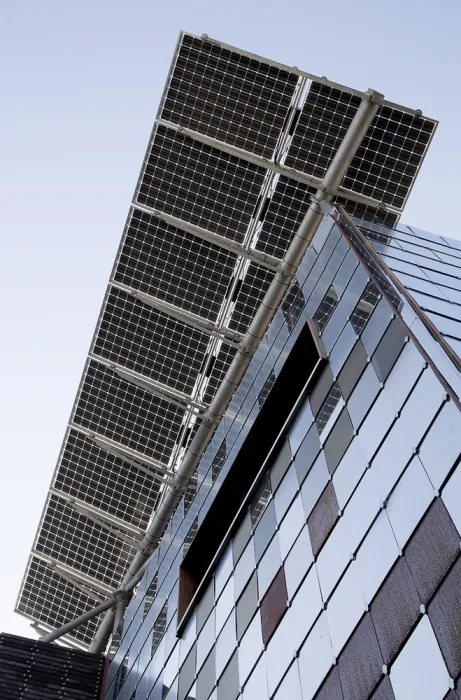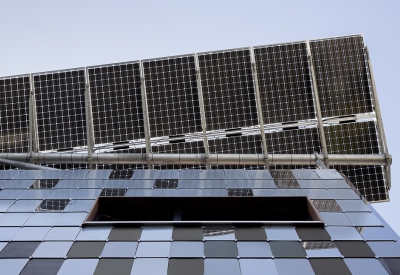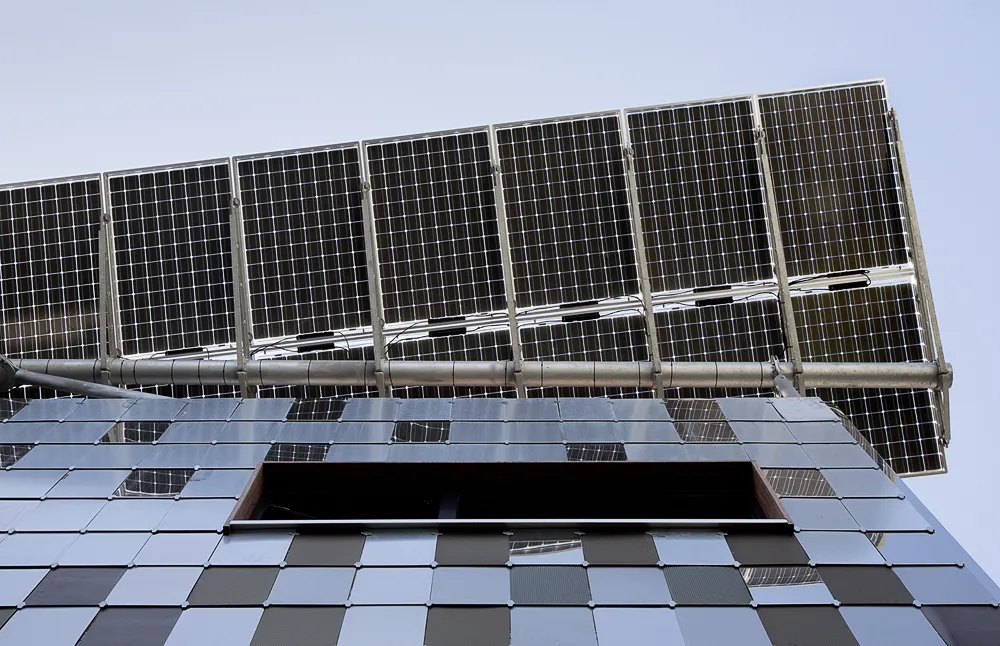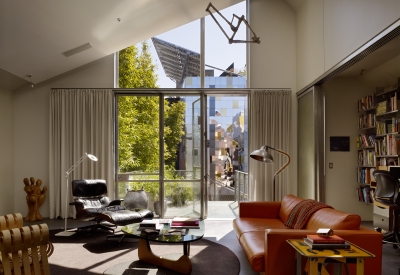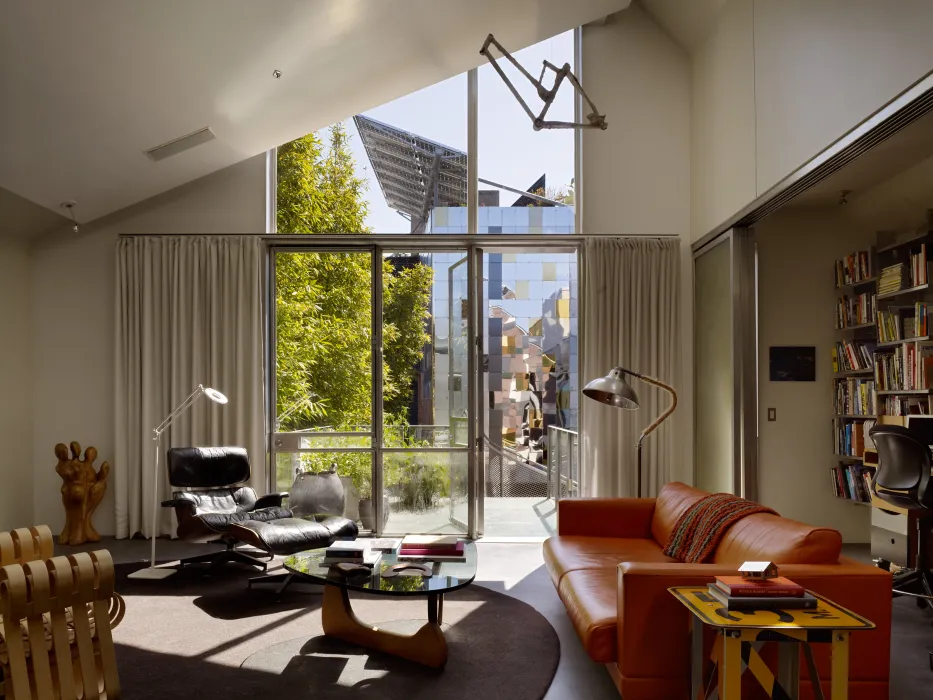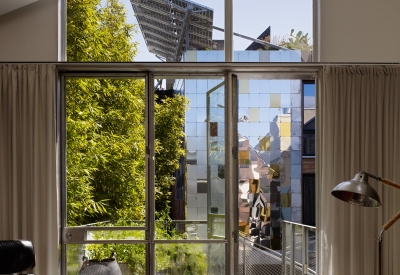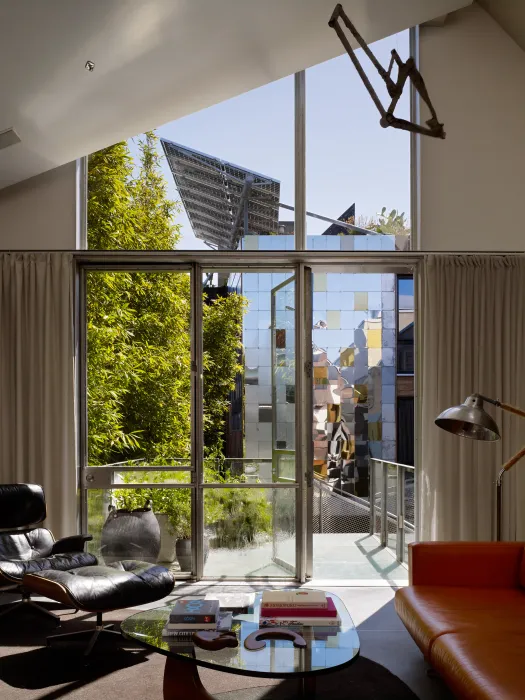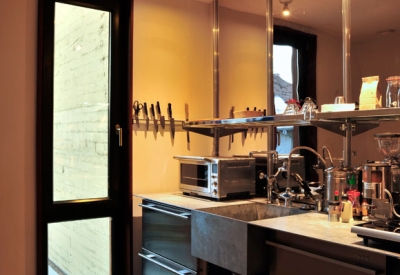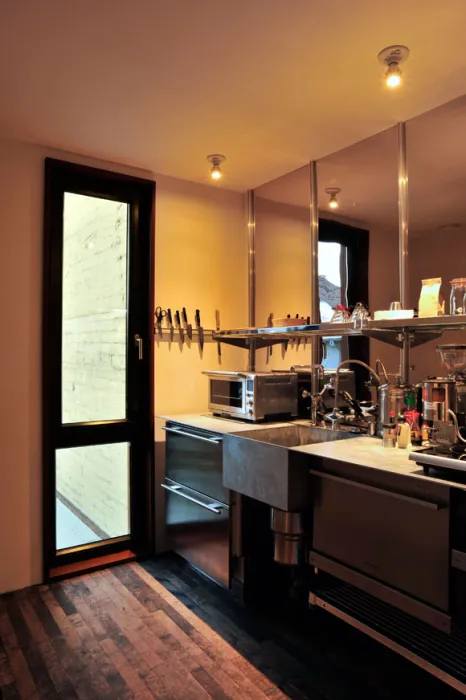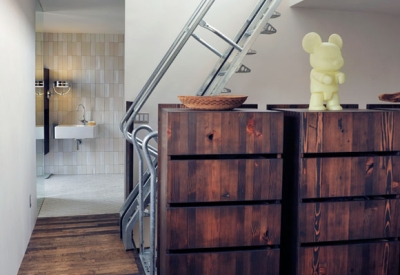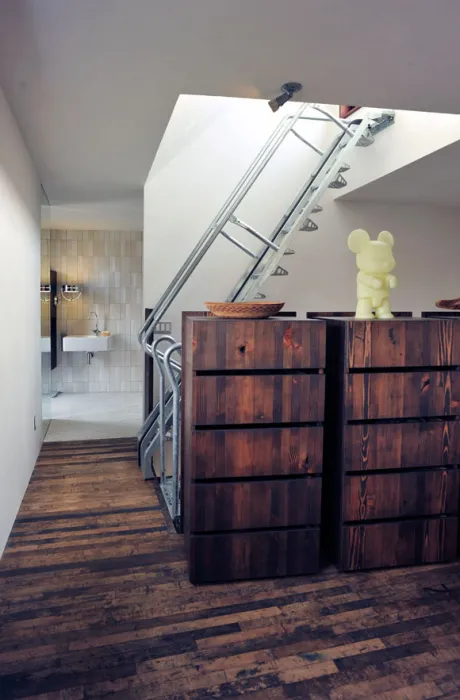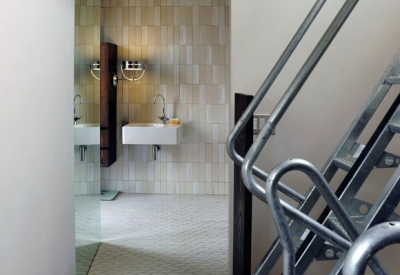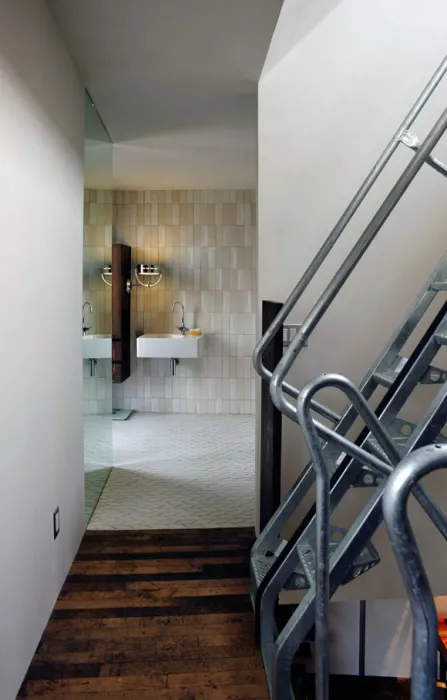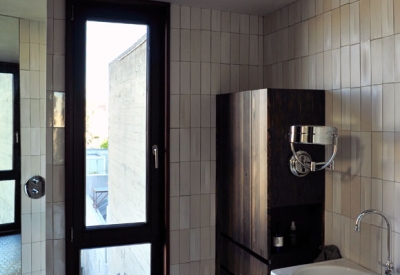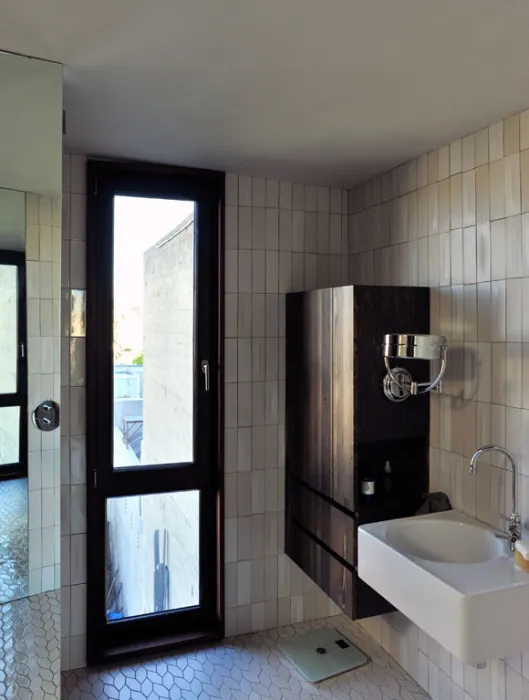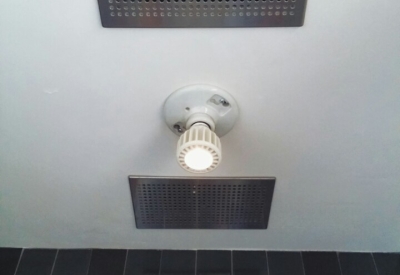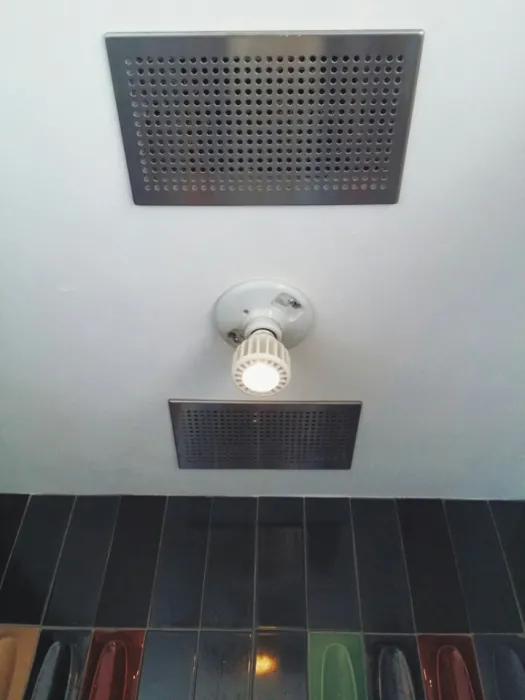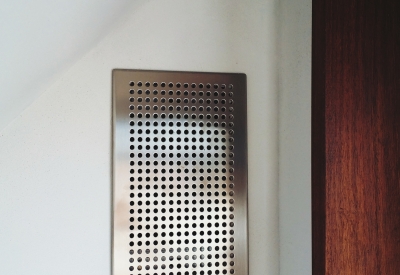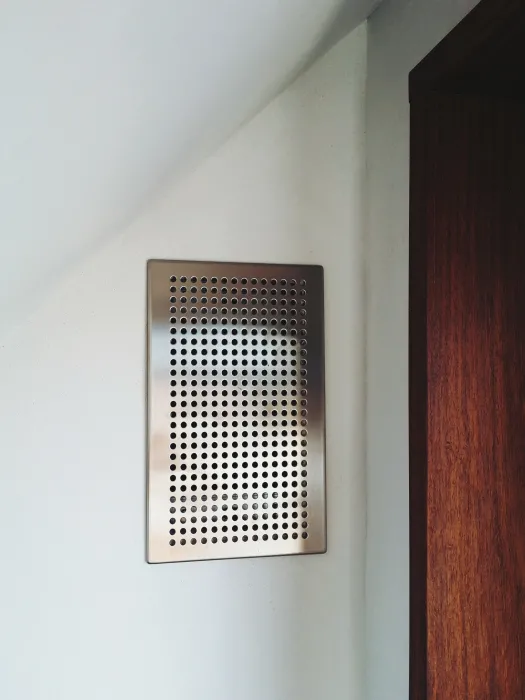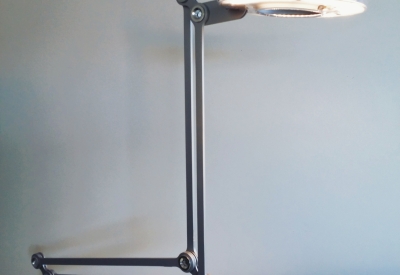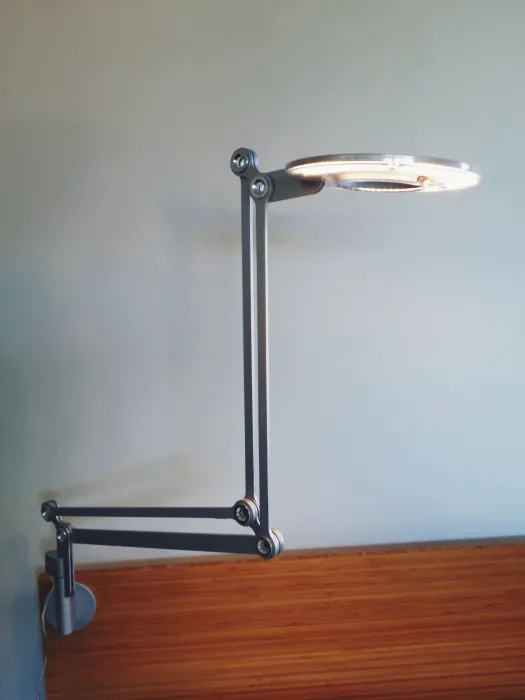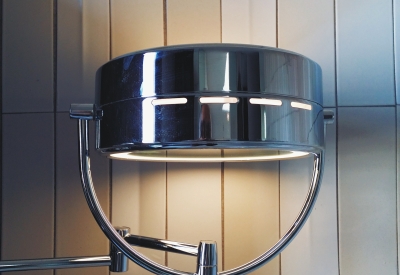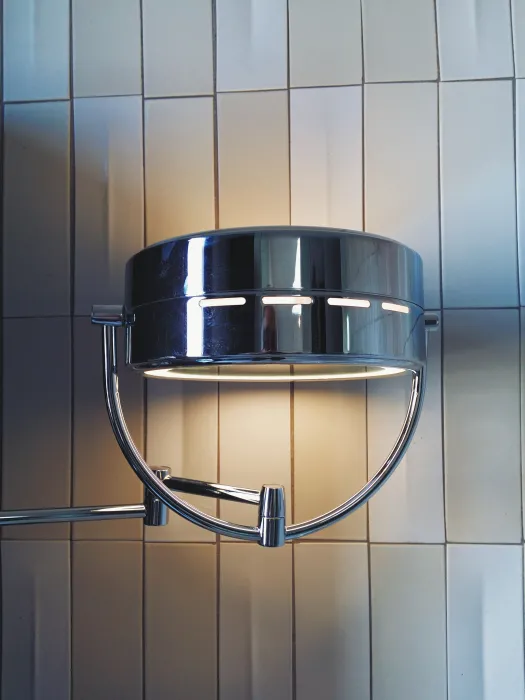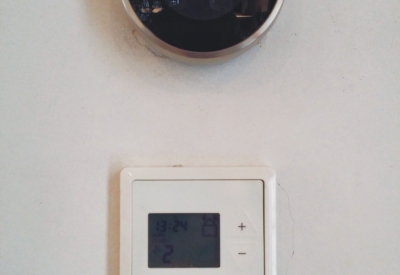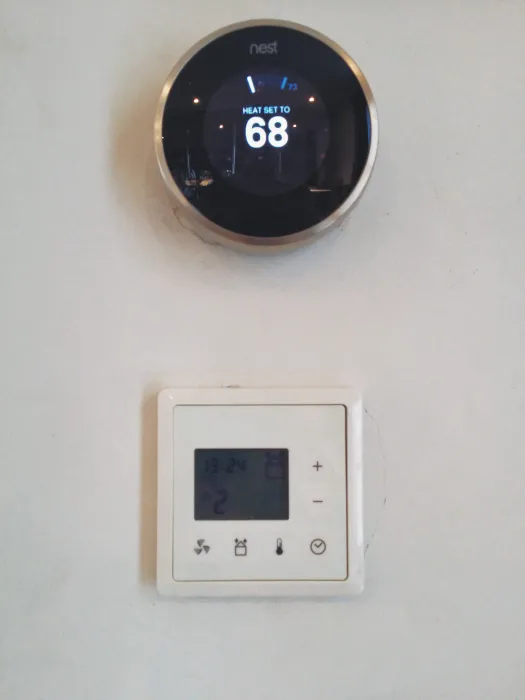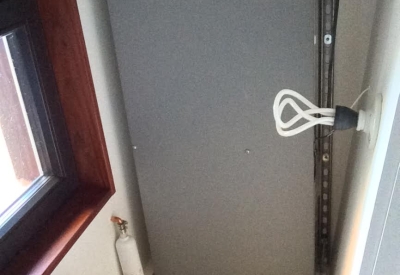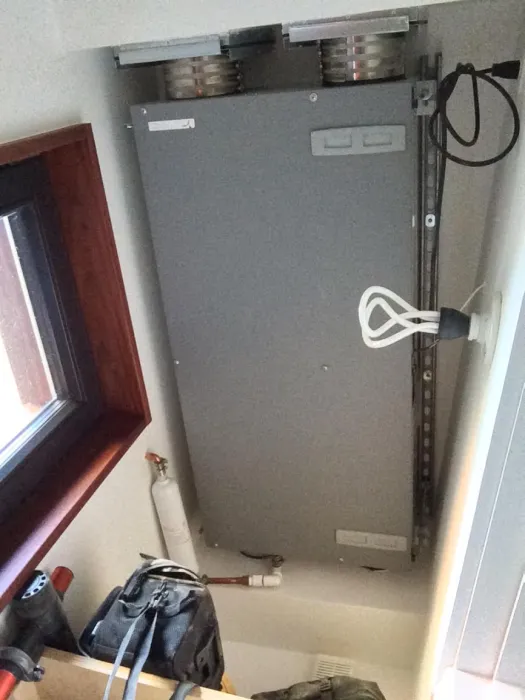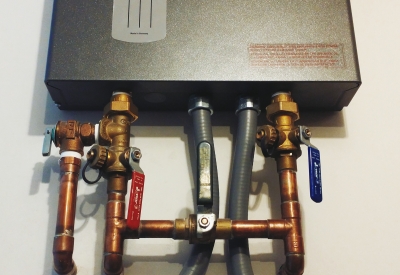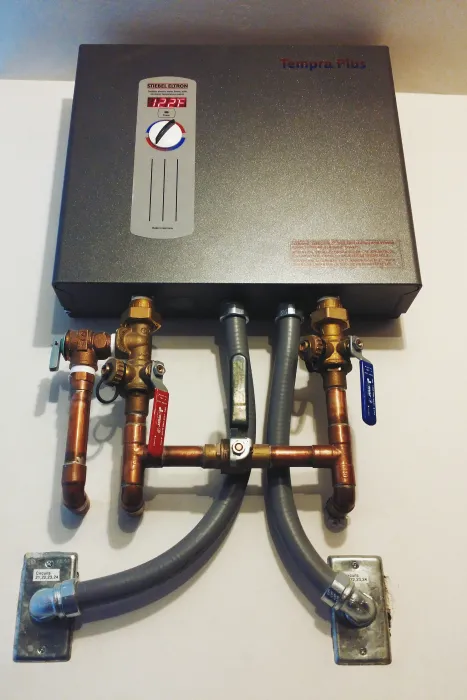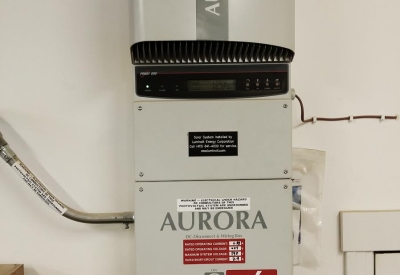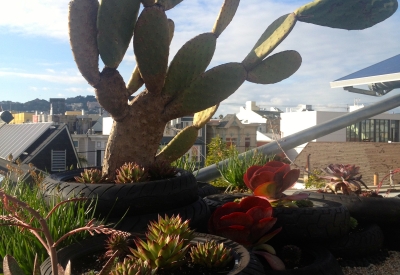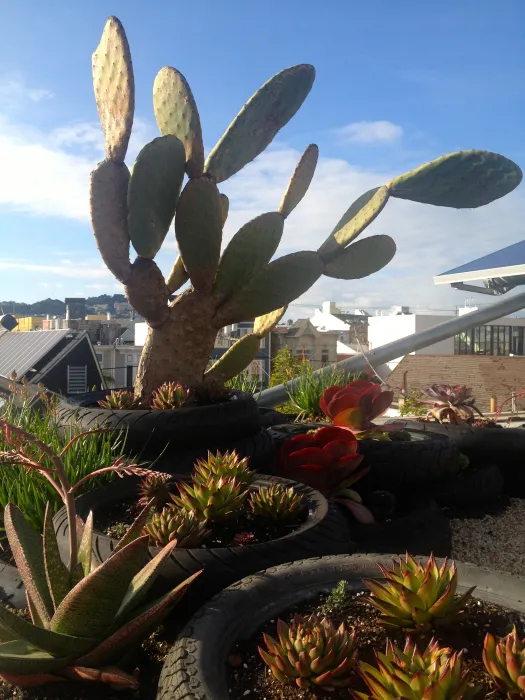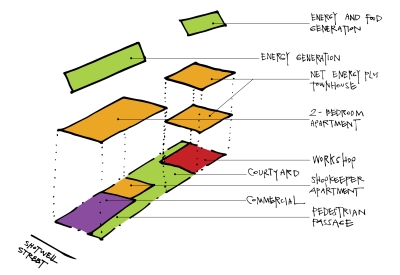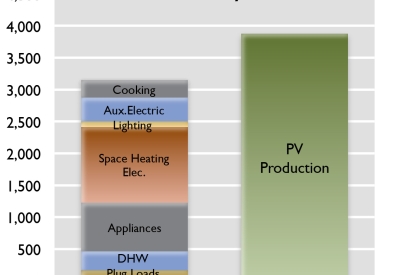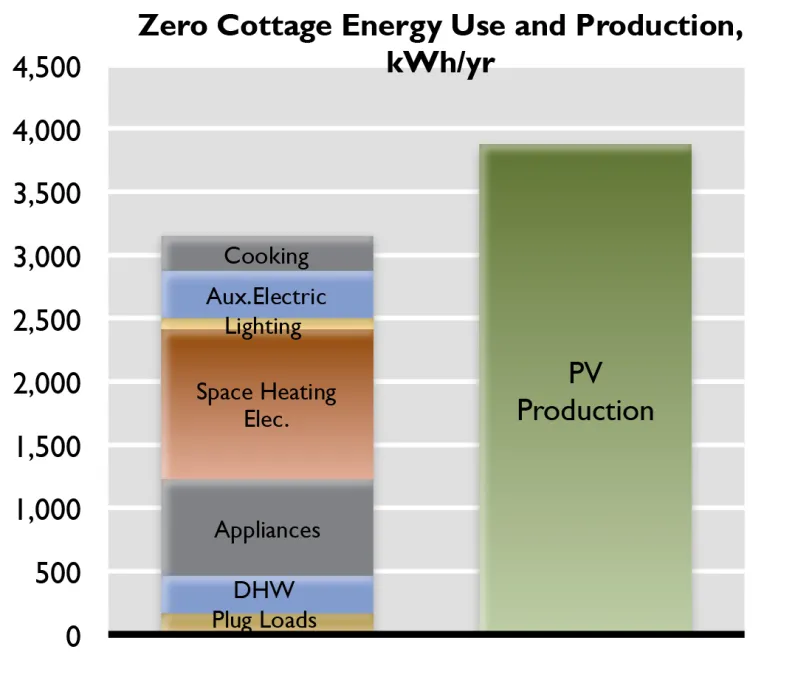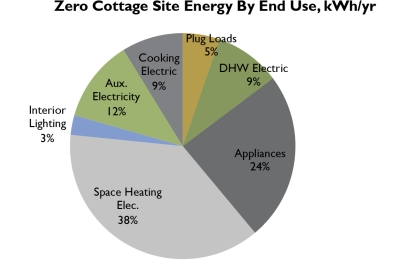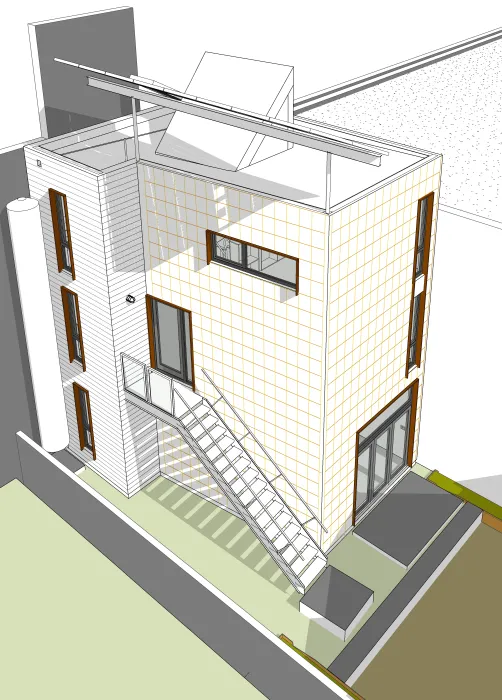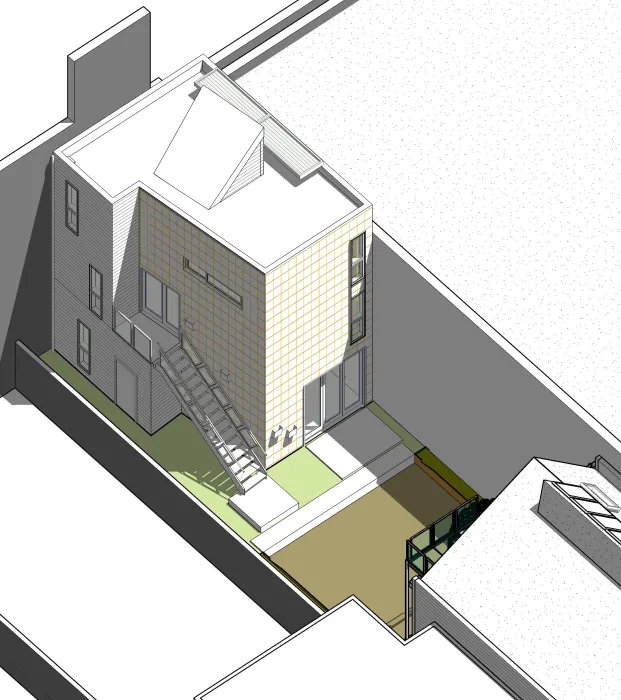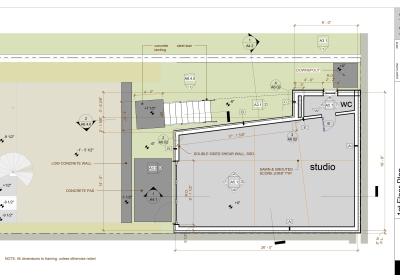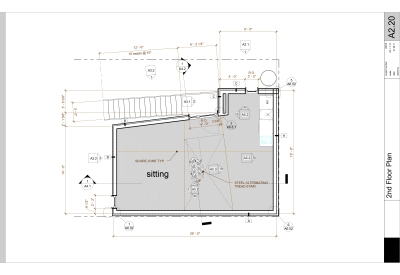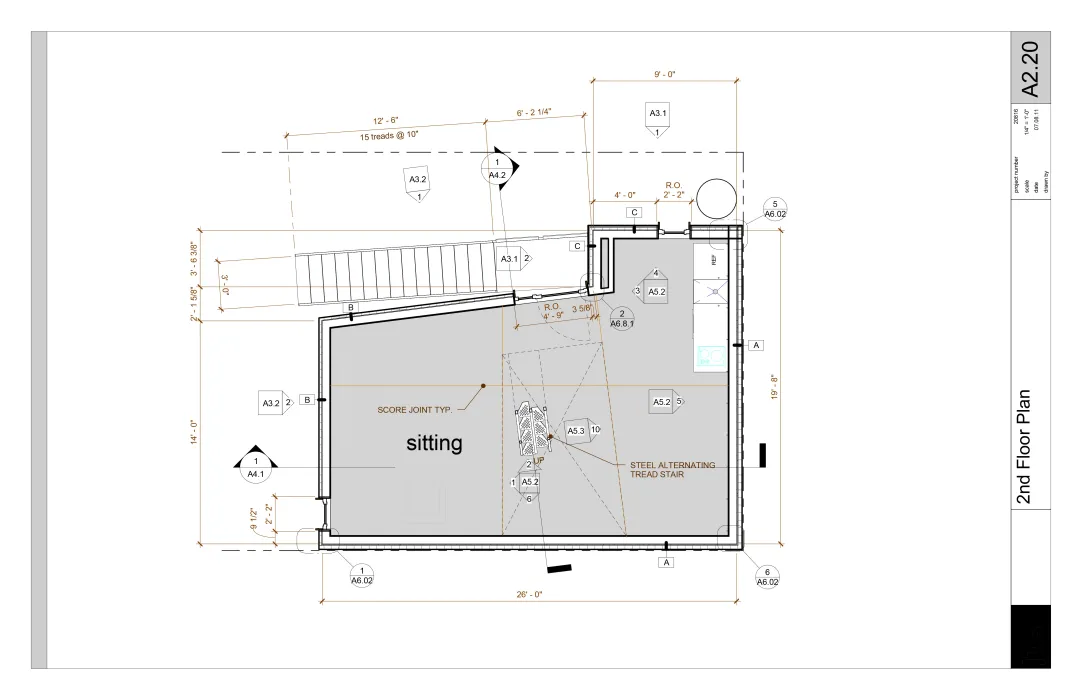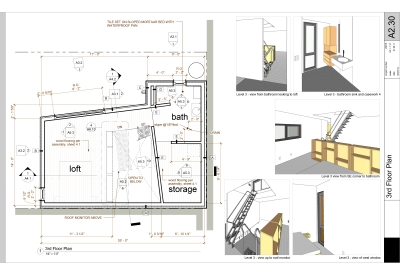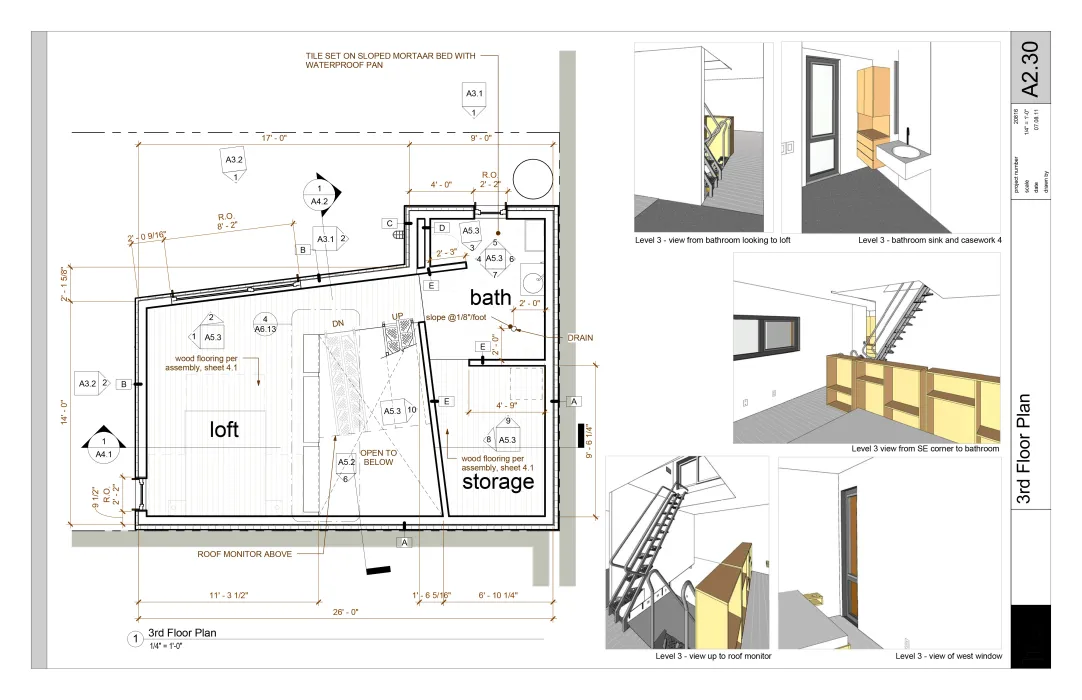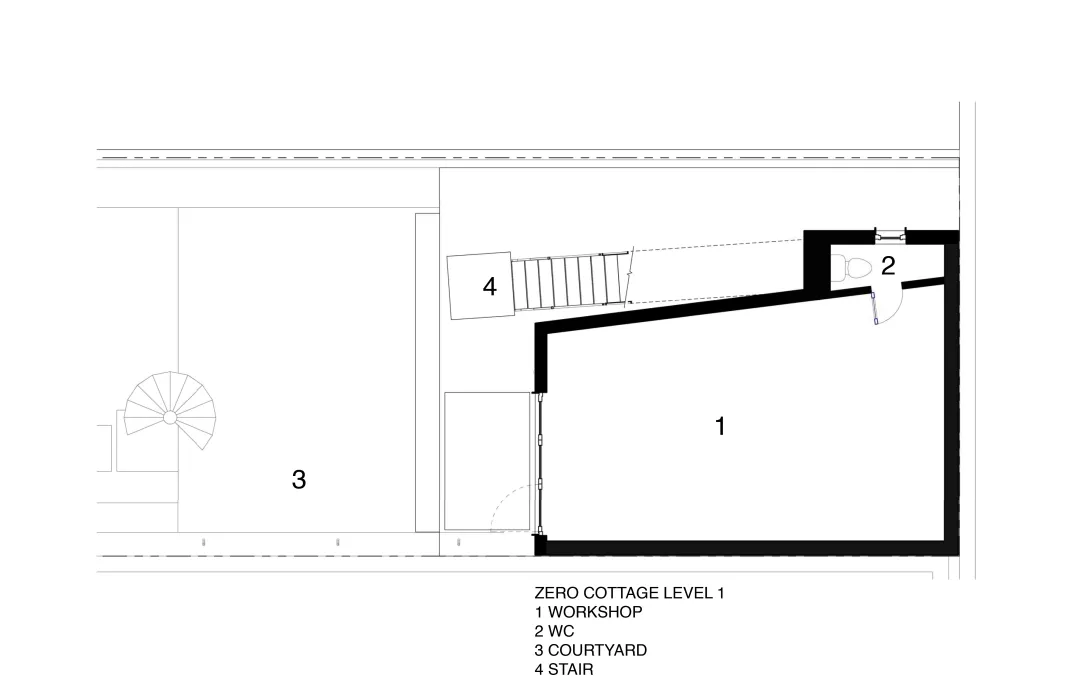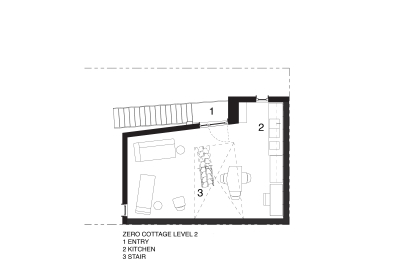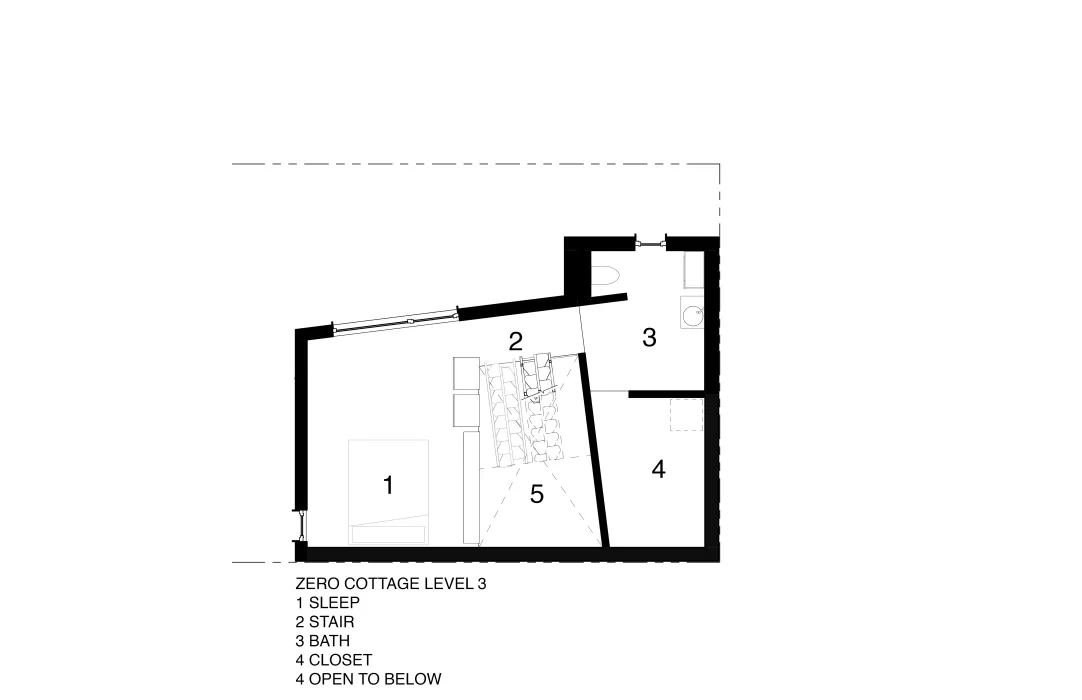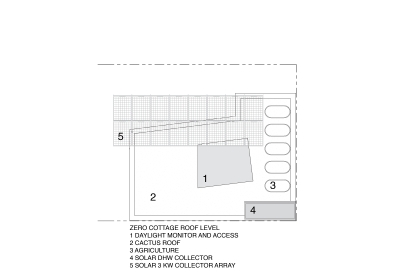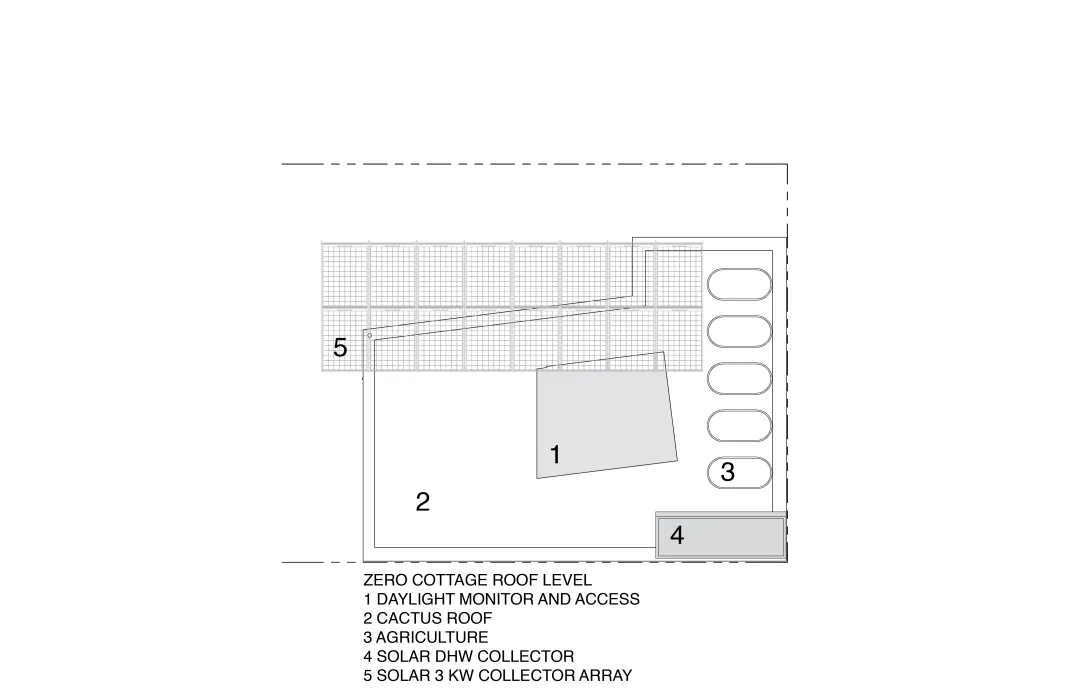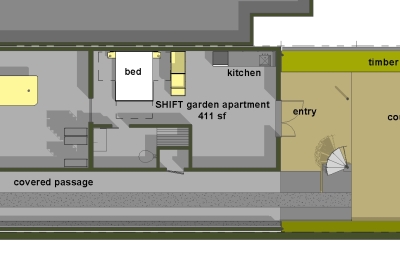San Francisco CA | Completed
The cottage features a 712-sf living space set over a 430-sf workshop and pairs with an existing building to complete a flexible, mixed-use compound that includes a two-bedroom flat, a studio apartment, and a storefront community space.
The freestanding addition presented an opportunity to explore advanced sustainable design, construction techniques, materials, and technologies with a goal of achieving Passive House and Net-Zero Energy certification.
The cottage is certified LEED for Homes Platinum. It is the first Passive House-certified home in San Francisco and achieved the ILFI Building Challenge Net Zero Certification in 2014 after one year of actual use data. ILFI (International Living Future Institute) comprehensively evaluates buildings for certification in such categories as Growth, Energy, Rights to Nature, Inspiration & Education, and Beauty & Spirit.
Within the cottage, the residence sits atop the ground-floor workshop—currently used as a ceramics studio—which opens out toward the central shared yard. The compact home features an open-plan kitchen, office, and living room topped by a bedroom suite. Above, a vegetated roof includes vegetable planters, composting, solar electric generation panels, a passive solar hot water collector and storage system, and a passive solar monitor that provides access as well.
Exterior highlights
The exterior metal siding is made up of mixed metal tiles connected by a custom stainless steel clip system designed by DBA. This system allows tiles to be individually removed and replaced, or otherwise moved around for effect. Three custom planter tiles fabricated from stainless steel hang from the same clips and can be relocated anywhere on the tiled elevation. One clear plastic tile serves as a window to reveal the batten and rigid insulation view.
Overall the tiles are mix of field metal fabricated locally from weathering steel, galvanized steel, and mirror stainless steel. The tiles are 12" wide by 17.5" high. Highlight tiles are made from industrial waste from the Zahner Company, the sheet-metal fabricator for many well-known buildings designed by star architects (for example, some deYoung Museum off-cuts are included).
The exterior siding serves as a “rainscreen”—a ventilated weather and UV barrier over rigid insulation and a water/air barrier.
Maple flooring salvaged from one of DBA’s adaptive reuse projects, the Pasta Factory at Tassafaronga Village in Oakland, was charred for use as exterior Shou-sugi-ban siding as well as being stripped and used as flooring inside the cottage. This charred wood siding is low-maintenance and resistant to insects, rot, and decay.
Interior highlights
Interior materials are no VOC (Volatile Organic Compounds): For example, the walls are plaster with no paint; the floor is recycled factory flooring finished with pigmented flaxseed oil. The same wood is used for the exterior charred-wood siding. The bathroom tile is primarily Heath factory seconds.
Shotwell Design Lab
The cottage continues the evolution of an urban site that predates the 1906 earthquake. The original compound comprised an upstairs flat set above a ground-floor grocery store, and additional living quarters in the rear yard.
In 2013, David Baker and Yosh Asato launched StoreFrontLab, a community-focused cultural initiative that gives the historic commercial space a new public purpose, rooted in the neighborhood’s contemporary culture. Over time, the flexibility of the compound’s components—Shotwell Design Lab—will support a wide range of uses and configurations.
Energy Performance
Primary Energy Demand: 26.6 kBTU/(ft2yr)
Annual Heat Demand: 3.88 kBTU/(ft2yr)
Heating Load: 2.47 BTU/(ft2hr)
Cooling Load: 0 BTU/(ft2hr)
Total Site Energy Demand: 3012 kWh/yr
Total Onsite PV Production: 3876 kWh/yr
Pressurization Test Result: 0.43 ACH50
Passive House Design
Envelope:
Roof: R-51.2
Walls: R-29.2
Floor: R-41.3
Windows and Doors:
Sorpetaler TF 78B triple argon
U-Frame: 0.23 BTU/hr.ft2.F
U-Glazing: 0.123 BTU/hr.ft2.F
SHGC: 0.49
Systems:
HRV (Heat Revovery Ventilator): Zehnder ComfoAir 200 •
Space Heating: Electric radiant
PV: Sanyo HIT Double 195 PV
Solar DHW: Sunearth Passive “Breadbox”
Project Details
339 Shotwell Street
San Francisco, CA
United States
Total 1
